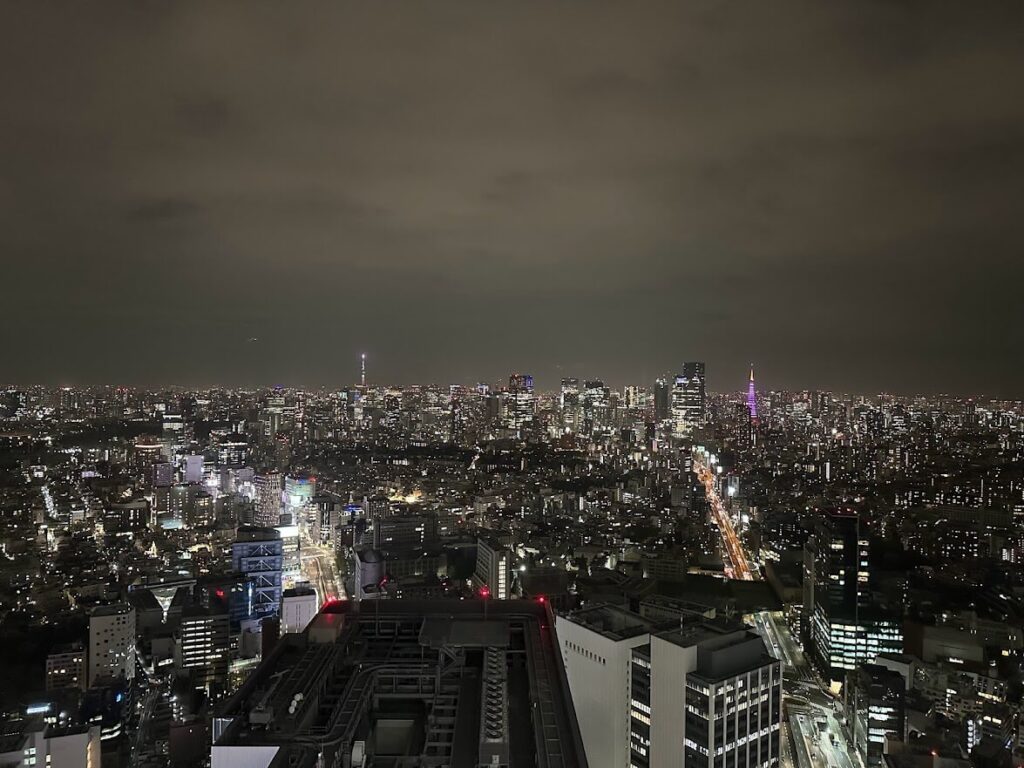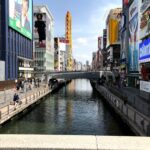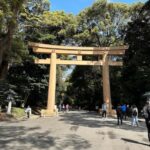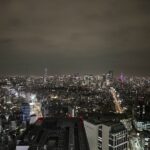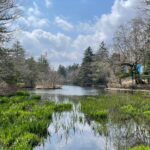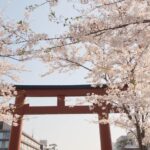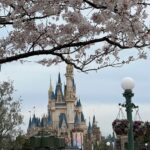Tokyo Prefecture Trivia
Tokyo, the capital and largest city of Japan, stands as the world’s foremost metropolis, ranking third in global urban competitiveness, surpassed only by New York and London. Annually, Tokyo captivates a substantial influx of tourists, showcasing unparalleled charm and allure within the realm of Japan. Presented below are inquiries and corresponding elucidations to enhance your initial exploration of Tokyo:
For first-time visitors to Tokyo, uncertain about which attractions to visit? Which sites are deemed essential?
Given Tokyo’s expansive magnitude, how should one navigate the city? What duration of time should be allocated for a fulfilling experience?
Is it advisable to prearrange transportation and tickets for a self-guided tour in Tokyo? How can one make judicious selections for cost-effectiveness?
Introduction to Tokyo Prefecture
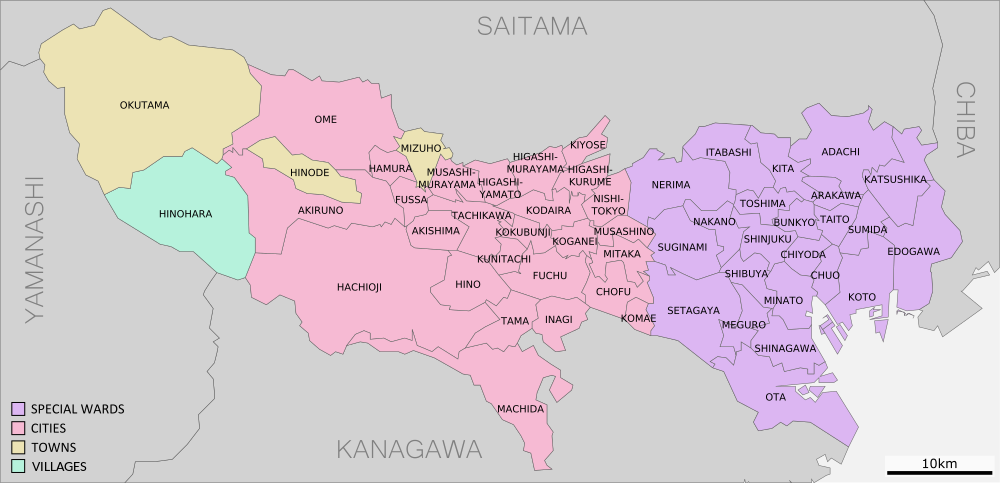
Tokyo Prefecture is composed of 23 special wards, 26 cities, 1 county, 4 subprefectures (islands), 5 towns, and 8 villages, primarily organized into three geographical divisions:
Tokyo Metropolis (Tokyo 23 Wards): Commonly referred to as the “Tokyo 23 Wards,” this central area includes well-known districts such as Shibuya, Shinjuku, Ueno, and various attractions.
Tama Region: Encompassing areas within Tokyo Prefecture beyond the Tokyo 23 Wards and island regions (Izu Islands, Ogasawara Islands), the Tama Region features several popular tourist destinations, making it suitable for travelers seeking a more in-depth experience.
Island Regions: This includes the islands of Tokyo Prefecture, such as the Izu Islands and Ogasawara Islands. Due to limited accessibility, these islands are generally less frequented by tourists.
Planning Your Tokyo Itinerary
Tokyo Free Exploration – Accommodation Selection
For first-time travelers planning a self-guided trip to Tokyo, it is recommended to adopt a radial approach centered around Ueno when exploring the surrounding attractions. The choice of Ueno as a central hub is primarily due to its convenient access to and from Narita Airport, facilitated by the 40-minute direct Skyliner service. For those unfamiliar with Tokyo on their initial visit, a radial approach offers flexibility in the face of unforeseen circumstances, such as inclement weather, transportation disruptions, or unexpected closures of attractions. Opting for accommodation in the same area provides greater maneuverability to adjust the itinerary as needed, making it a simpler alternative compared to a circular route.
However, the ultimate decision should be influenced by the locations of the intended attractions. For trips to suburban areas like Karuizawa or Nikko, Ueno is highly recommended. If destinations include Hakone Lake, Izu Atami, then accommodations in Shinjuku or Shibuya are preferable. The choice of Shinjuku or Shibuya is influenced by the availability of the Narita Express (N’EX) for direct access to and from Narita Airport and the appeal of shopping, making these areas suitable for those inclined toward retail therapy.
For first-time visitors to Tokyo, the primary consideration when selecting accommodation is the convenience of surrounding transportation, with subway stations accessible within a 5-minute walk. Additionally, direct access to airport subway lines should be prioritized, followed by an evaluation of local amenities.
Here are a few key points to consider:
For first-time visitors, Ueno or Shinjuku is recommended for accommodation.
Opt for a single hotel to facilitate a radial exploration of various attractions.
Ensure that a subway station is within a 5-minute walking distance for convenient transportation.
Tokyo Free Exploration – Transportation Options
Tokyo’s primary subway systems comprise JR East Japan, the Metro Subway Network, and the Toei Subway.
JR Yamanote Line (JY): Circles major stations in the heart of Tokyo.
JR Chuo Line, Sobu Line (JC, JB): Crosses through the central area of Tokyo, passing through Tokyo Station, Shinjuku Station, Kichijoji, and Takaosan.
JR Keiyo Line (JE): Connects Tokyo to Tokyo Disneyland, serving as a major route.
Narita Express (N’EX): Links Tokyo to Narita Airport, utilizing Narita Line, Sobu Main Line, Sobu Rapid Line, and Yamanote Line.
Metro Subway and Toei Subway are the primary modes of transportation for touring within Tokyo city. The combination of JR, Metro Subway, and Toei Subway almost seamlessly covers any part of the Tokyo city area. With proper research on the locations of attractions and the use of Google Maps for route planning, the risk of getting lost or missing trains is minimized. It is advisable to check the last train departure time for the desired route to avoid missing the last train back to the accommodation.
Map of Tokyo Subway Lines
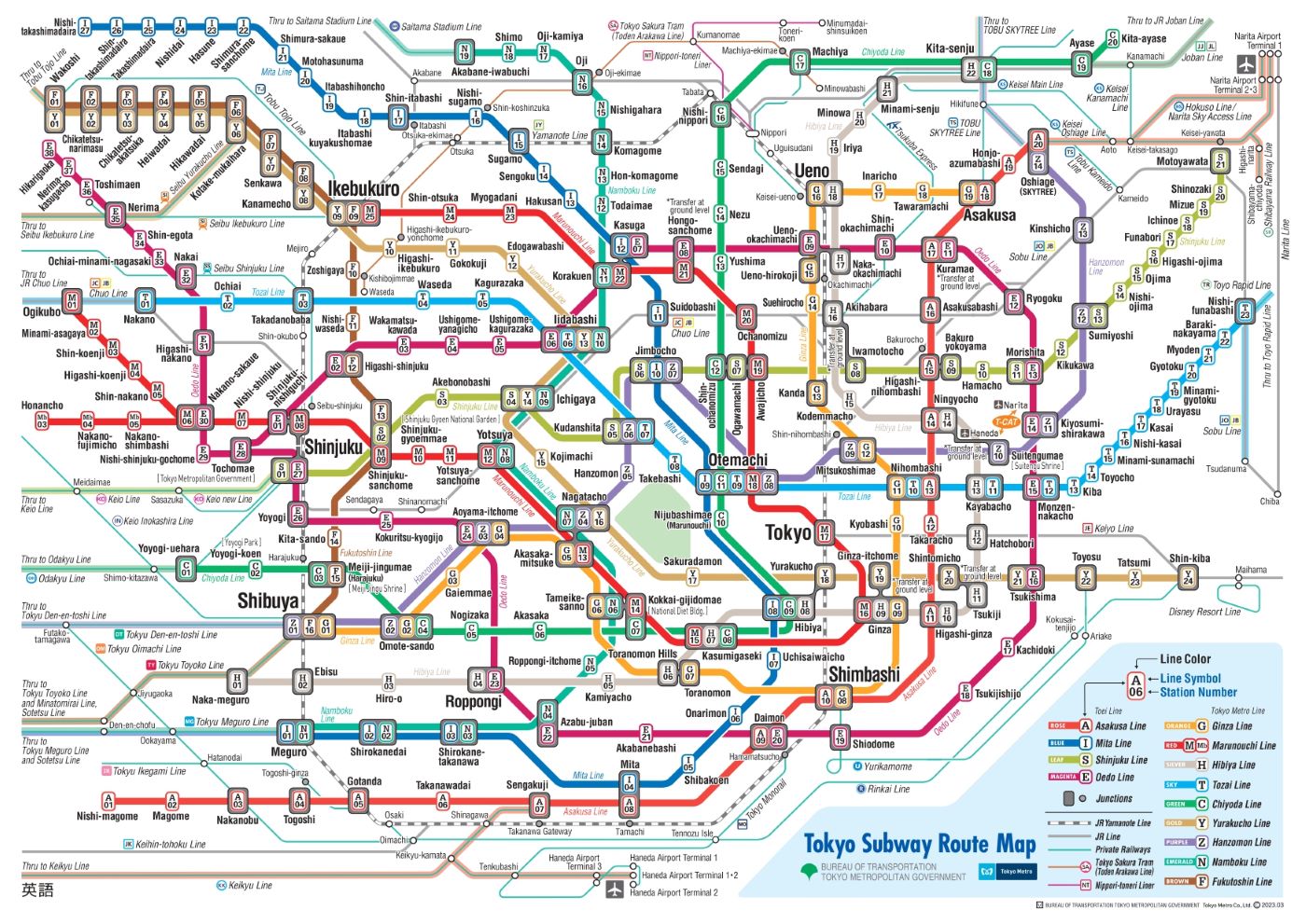
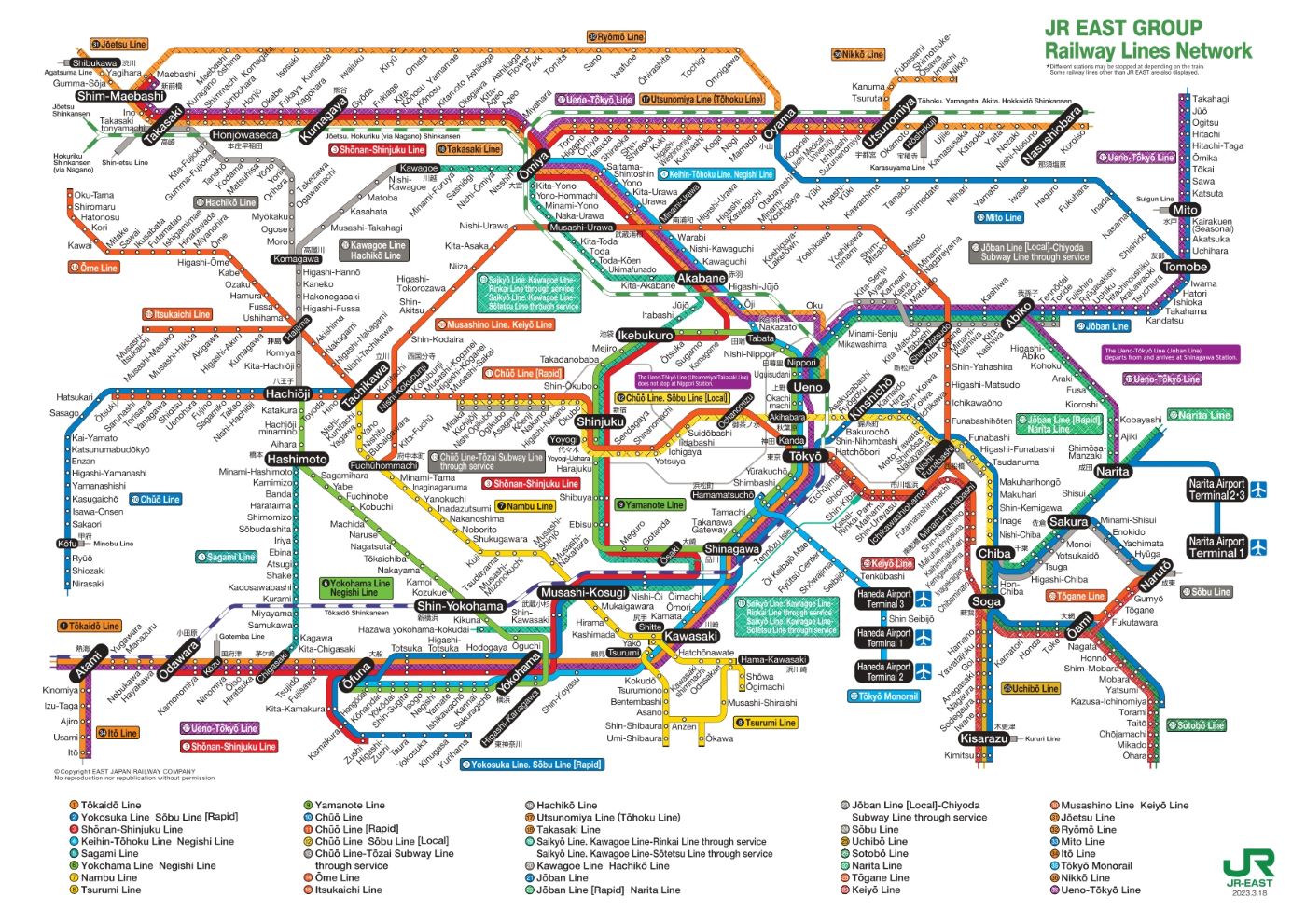
Tokyo 9-Day Itinerary Sharing
Here is a 9-day itinerary that I personally experienced. Since I stayed in the same hotel, adjustments can be freely made according to individual preferences. However, please note the following:
Prioritize attractions in the same area or along the same train line to minimize transfer and travel time.
Check the last train departure time for each attraction to avoid additional expenses on taxis.
Keep travel time to attractions within 2 hours, especially if traveling with children or elderly individuals. Try to plan activities around the accommodation area.
| Day | Attractions (Main Train Lines) |
|---|---|
| Day 1 | Asakusa Senso-ji Temple -> Tokyo Skytree (Ginza Line (G)) |
| Day 2 | Tokyo Daijingu Shrine -> Yasukuni Shrine -> Shinjuku Gyoen National Garden (Shinjuku Line (S)) |
| Day 3 | Ghibli Museum, Mitaka -> Inokashira Park -> Shibuya Sky (Chuo Line to Kichijoji, Inokashira Line (Keio Railway) to Shibuya) |
| Day 4 | Tsukiji Fish Market -> TeamLab Planets TOKYO -> Odaiba (Yurikamome Line (U)) |
| Day 5 | Meiji Shrine -> Yoyogi Park -> Omotesando (JR Yamanote Line) |
| Day 6 | okyo Disneyland (Hibiya Line (H) -> Keiyo Line (JE)) |
| Day 7 | Tsurugaoka Hachiman Shrine -> Enoshima (Yokosuka Line -> Enoshima Electric Railway) |
| Day 8 | Karuizawa (Hokuriku Shinkansen) |
| Day 9 | Ueno Park -> Ameya-Yokocho Market |
Day 1
Arrive at Narita Airport and take the Skyliner directly to Ueno.
To visit the Tokyo Skytree, you can choose to walk or take the subway. If you have enough energy and wish to enjoy the scenery along the way, walking is an option. The walking distance is approximately 1.2 kilometers, and there is a bridge beneath the Tobu Skytree Line for pedestrians.
If you prefer to take the subway, board the Ginza Line (G) towards Asakusa and alight at Asakusa Station (G19).
Alternatively, if you choose the subway route to the Tokyo Skytree, take the Tobu Skytree Line (TS). The station entrance is located near Asakusa Station on the Ginza Line. Board the train at Asakusa Station (TS01) and disembark at Tokyo Skytree Station (TS02).
Day 2
Take the Ginza Line (G) to Nihombashi Station (G11), transfer to the Tozai Line (T), and travel to Iidabashi Station (T06). If you don’t plan to visit Tokyo Daijingu Shrine, exit at Kudanshita Station (T07) and proceed directly to Yasukuni Shrine.
Yasukuni Shrine is within an 800-meter walking distance of Chidorigafuchi Park, a popular cherry blossom viewing spot.
For the next destination, board the Shinjuku Line (S) at Kudanshita Station (S05), travel to Shinjuku Sanchome Station (S02), and walk approximately 200 meters to the entrance of Shinjuku Gyoen National Garden.
Please note that Shinjuku Gyoen National Garden requires an admission fee, especially during cherry blossom season. Advance online reservations are necessary. The reservation page offers options for both reservations and ticket purchase, priced at ¥500 per person. Payment is made using a credit card, and there is no need to queue for tickets on the day of the visit if reservations are made in advance.
The most convenient route from Shinjuku back to Ueno is to take the Yamanote Line (JY) or the Oedo Line (E), both of which provide a direct route without requiring a transfer to Ueno Station.
Day 3
Travel from Ueno to Kichijoji by taking the Yamanote Line (JY) from Ueno Station (JY05) to Kanda Station (JY02). Transfer to the Chuo Line (JC) at Kanda Station (JC02) and head to Kichijoji Station (JC11).
Kichijoji Station is approximately 1 kilometer away from the Ghibli Museum in Inokashira Park. During cherry blossom season, Inokashira Park is a popular spot for sakura viewing.
The Keio Inokashira Line (IN) departs from the same station as the JR line, with separate platforms. Take the Keio Inokashira Line (IN) from Kichijoji Station (IN17) to Shibuya Station (IN01).
For the best entrance time at Shibuya Sky, it is recommended to arrive 30 to 60 minutes before sunset. This timing allows you to enjoy the daytime, sunset, and nighttime views simultaneously. Arriving earlier helps avoid queues and ensures a smoother experience.
Day 4
From Ueno Station (H18), take the Hibiya Line (H) to Tsukiji Station (H11).
From Tsukiji Fish Market to TeamLab Planets TOKYO, take the Yurakucho Line (Y). Board at Shintomicho Station (Y20) and alight at Toyosu Station (Y22). After a 2-minute walk, reach Toyosu Station (U16) on the Yurikamome Line (U), then proceed to Shinkiba Station (U15).
To reach Odaiba from TeamLab Planets TOKYO, take the Yurikamome Line (U) from Shinkiba Station (U15) to Daiba Station (U07).
It is recommended to purchase tickets for TeamLab Planets TOKYO online in advance to save queue time. As the exhibition area includes glass floors and water features, wearing shorts is advisable, and skirts or loose shorts are not recommended. The venue provides storage lockers for shoes, socks, and personal belongings.
Day 5
The most convenient way from Ueno (JY05) to Harajuku (JY19) is to take the Yamanote Line (JY). Meiji Shrine is located next to Harajuku Station.
Adjacent to Meiji Shrine is Yoyogi Park, a popular cherry blossom viewing spot. The park offers picnic mats and food, allowing spontaneous picnicking without worry.
After exploring Omotesando, take the Ginza Line (G) from Omotesando (G02) back to Ueno (G16).
Day 6
From Ueno Station (H18), take the Hibiya Line (H) to Hatchobori (H12), then transfer to the Keiyo Line (JE) to Maihama (JE07).
It is recommended to download the Disney app in advance, as on-site internet connectivity may be less stable. Arrive at the park one hour before opening to queue. Consider purchasing Disney’s FastPass (DPA) for popular attractions to reduce waiting times.
For the evening parade at Tokyo DisneySea, arrive early to secure a good viewing spot by the lake, as arriving too late may make it challenging to find a prime vantage point.
Day 7
Take the JR Ueno-Tokyo Line to Totsuka or Ofuna, then transfer to the Yokosuka Line (JO) to Kamakura (JO07).
The entrance to Enoshima Electric Railway is on the opposite side of JR Kamakura Station, with an underground passage for crossing.
For those unwilling to climb stairs on Enoshima, there is an escalator available for a fee of 360 yen. However, the escalator only goes up; descending still requires using stairs.
On the return journey, take the Enoshima Electric Railway to Ofuna. The station is located near Enoshima Electric Railway’s Enoshima Station, inside a building beyond a level crossing.
Day 8
To travel from Ueno to Karuizawa, it is recommended to purchase the JR PASS Tokyo Wide Area Pass. Priced at 10,800 yen, this pass allows unlimited JR travel within the specified region for three consecutive days. The round trip from Ueno to Karuizawa costs approximately 11,000 yen, making the JR PASS cost-effective when combined with other days of use.
When using the JR PASS, it is advisable to reserve seats online to secure seating.
During winter, cycling is not recommended due to cold weather and frost on the ground, making it slippery and dangerous. Consider taking a bus instead.
Day 9
From Keisei Ueno Station, take the Skyliner directly to Narita Airport.
Recommended attractions in Tokyo
Tokyo Skytree
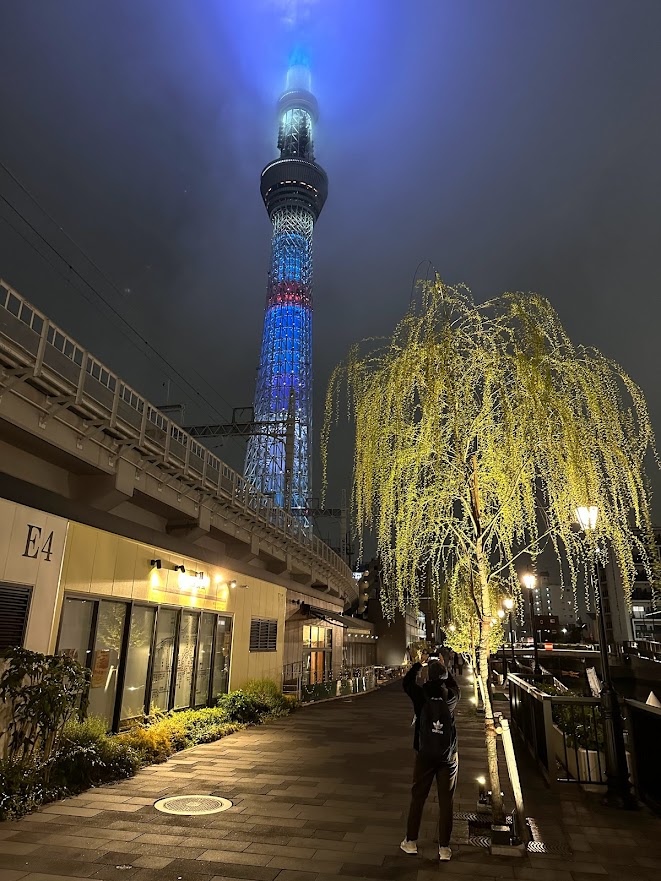
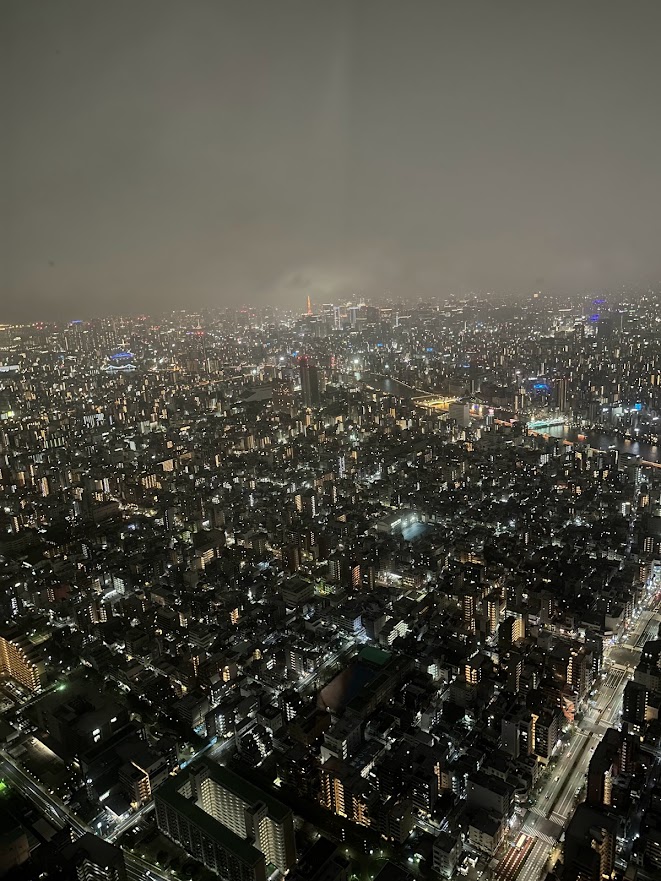
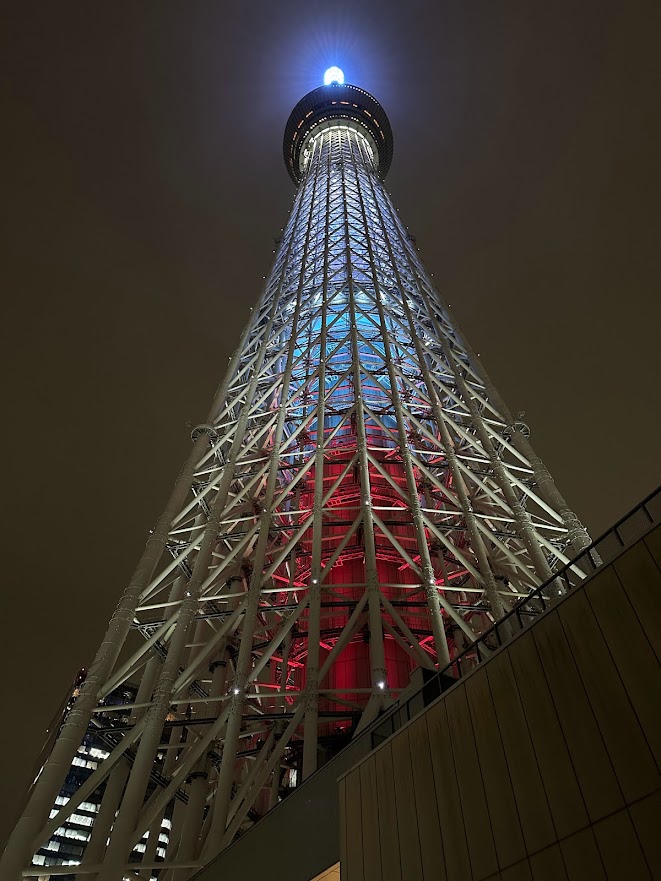
The Tokyo Skytree is an architectural marvel located in the Sumida Ward of Tokyo, standing tall as a telecommunications tower. Soaring to a height of 634 meters, it surpasses the Tokyo Tower, claiming the title of Japan’s tallest structure and securing its place as the world’s foremost tower.
The Tokyo Skytree boasts two observation decks, providing visitors with the opportunity to revel in the spectacular urban vistas. The first observation deck, known as the “TEMBO DECK,” is perched at an elevation of 350 meters, offering a panoramic 360-degree view. From here, guests can gaze upon the entirety of the Tokyo metropolis and the distant silhouette of Mount Fuji. The second observation deck, situated at an even loftier altitude of 450 meters, bears the name “TEMBO GALLERIA” and provides an even more expansive perspective. It is worth noting that access to the second observation deck incurs an additional fee. As to whether one should invest in this added experience, personally, I advocate for ascending to this higher vantage point. The 100-meter disparity in altitude yields a discernible difference in the panorama, making it particularly appealing for enthusiasts of urban landscapes. Of course, this recommendation assumes favorable weather conditions, as visibility on both decks may appear comparable during rainy days.
Address: 1 Chome-1-2 Oshiage, Sumida City, Tokyo 131-0045, Japan
Business Hours: 10:00 AM to 9:00 PM (Open year-round)
Admission Fee: Additional 300-400 Japanese Yen for on-the-day purchases
Combo Ticket for Tembo Galleria + Tembo Deck: 2,700 Japanese Yen (Advance purchase)
Tembo Deck Only: 1,800 Japanese Yen (Advance purchase)
Official Website: Click Here
SHIBUYA SKY Observatory
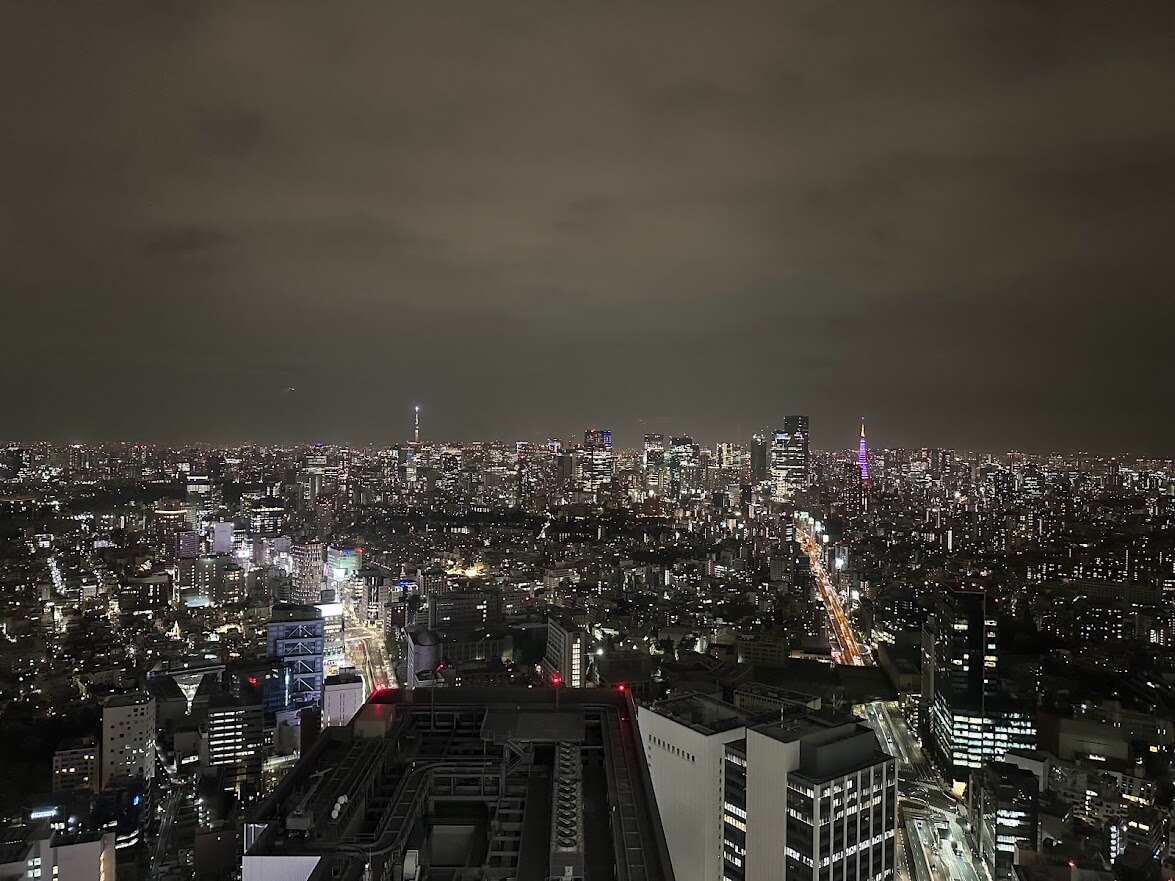
SHIBUYA SKY, located in Shibuya, Tokyo, is an observation deck offering a spacious viewing area where visitors can enjoy panoramic views of the Shibuya district and the Tokyo city center in the distance. The observatory features both indoor and outdoor sections, with the indoor area typically equipped with glass windows for viewing, while the outdoor area provides a more expansive vantage point.
Standing at a height of 229 meters, SHIBUYA SKY benefits from minimal surrounding tall structures, providing an exceptionally wide field of vision. Facing towards Tokyo, one can observe landmarks such as Tokyo Tower and Tokyo Skytree, while looking in the opposite direction, on a clear day, Mount Fuji becomes visible. I recommend entering the observatory approximately 30 to 60 minutes before sunset to witness the transition from daylight to sunset and into the night. Due to the high demand during this period, tickets often sell out quickly upon release. For those wishing to enjoy all three phases of the scenery, it is advisable to prepare and book in advance.
Address: 2 Chome-24-12 Shibuya, Shibuya City, Tokyo 150-6145, Japan
Business Hours: 10:00 AM to 10:30 PM (Open Year-Round)
Admission Fee:
Same-day purchase at the counter: Additional 300 Japanese Yen
Adults (18 years and above): 2,200 Japanese Yen
High school and junior high school students: 1,700 Japanese Yen
Elementary school students: 1,000 Japanese Yen
Young children (3 to 5 years old): 600 Japanese Yen
Official Website: Click Here
TeamLab Planets TOKYO
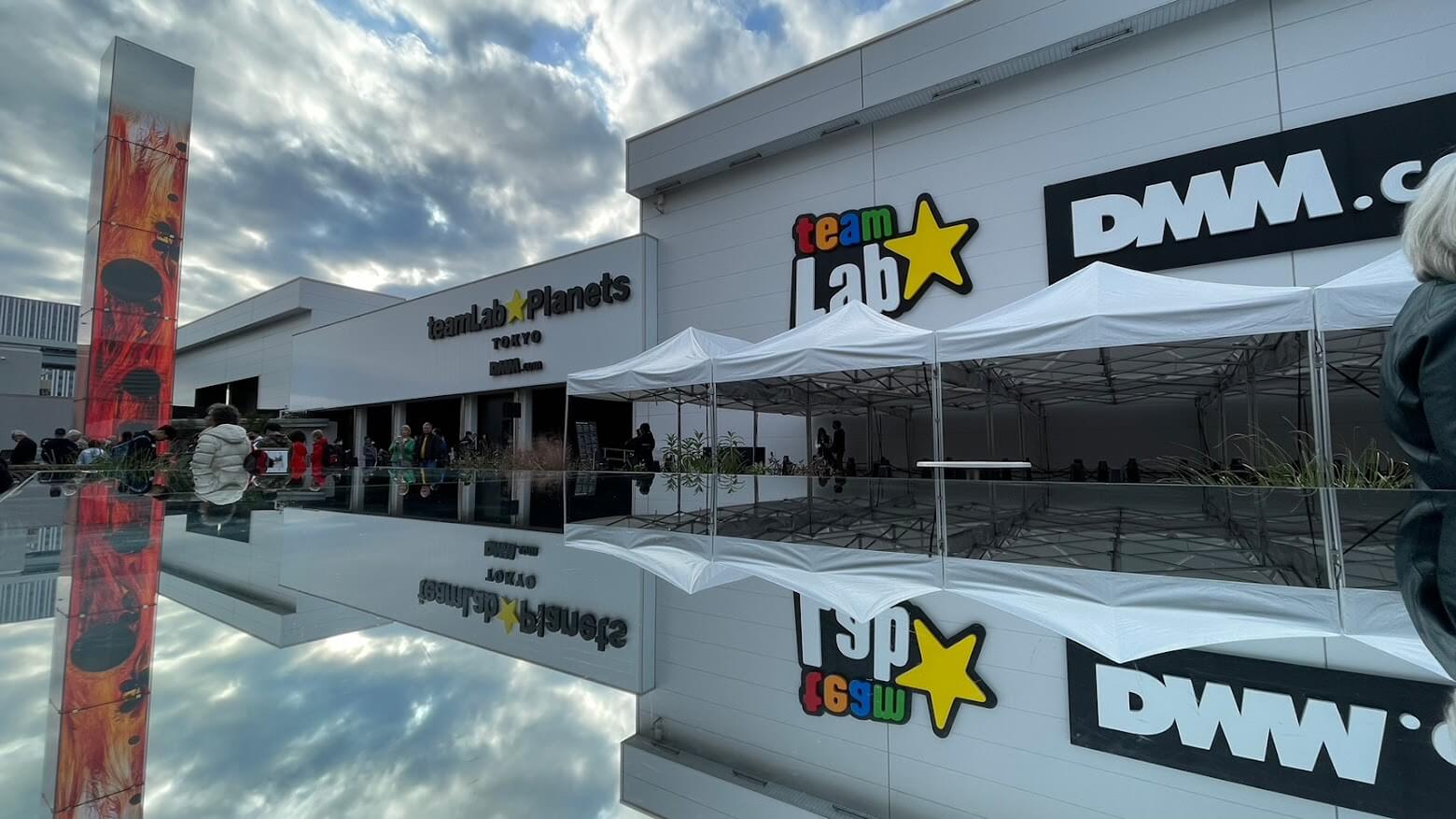
TeamLab Planets TOKYO is an interactive art museum located in Toyosu, Tokyo. It has become a popular spot for photography and social media check-ins. The exhibition space showcases a series of large-scale art installations involving elements such as nature, light, shadow, water, and flowers. Using sensor technology, these installations generate different changes and reactions based on the movements and interactions of visitors.
For those who enjoy art and capturing trendy photos for social media, it is recommended to allocate half a day to explore. The museum is divided into 5 vast art spaces, consisting of a total of 8 interactive art installations. Each art piece offers a delightful experience of the fusion between art and technology that is worth savoring slowly!
Address: 6 Chome-1-16 Toyosu, Koto City, Tokyo 135-0061, Japan
Business Hours: 09:00 ~ 22:00 (Rest days subject to official website)
Admission Fee:
Adults (18 years and above): 3,800 Japanese Yen
High School Students, Junior High School Students: 2,300 Japanese Yen
4 to 12 years old: 1,300 Japanese Yen
Children (3 years and below): Free
Discounted ticket for people with disabilities: 1,900 Japanese Yen
Official Website: Click Here
Odaiba
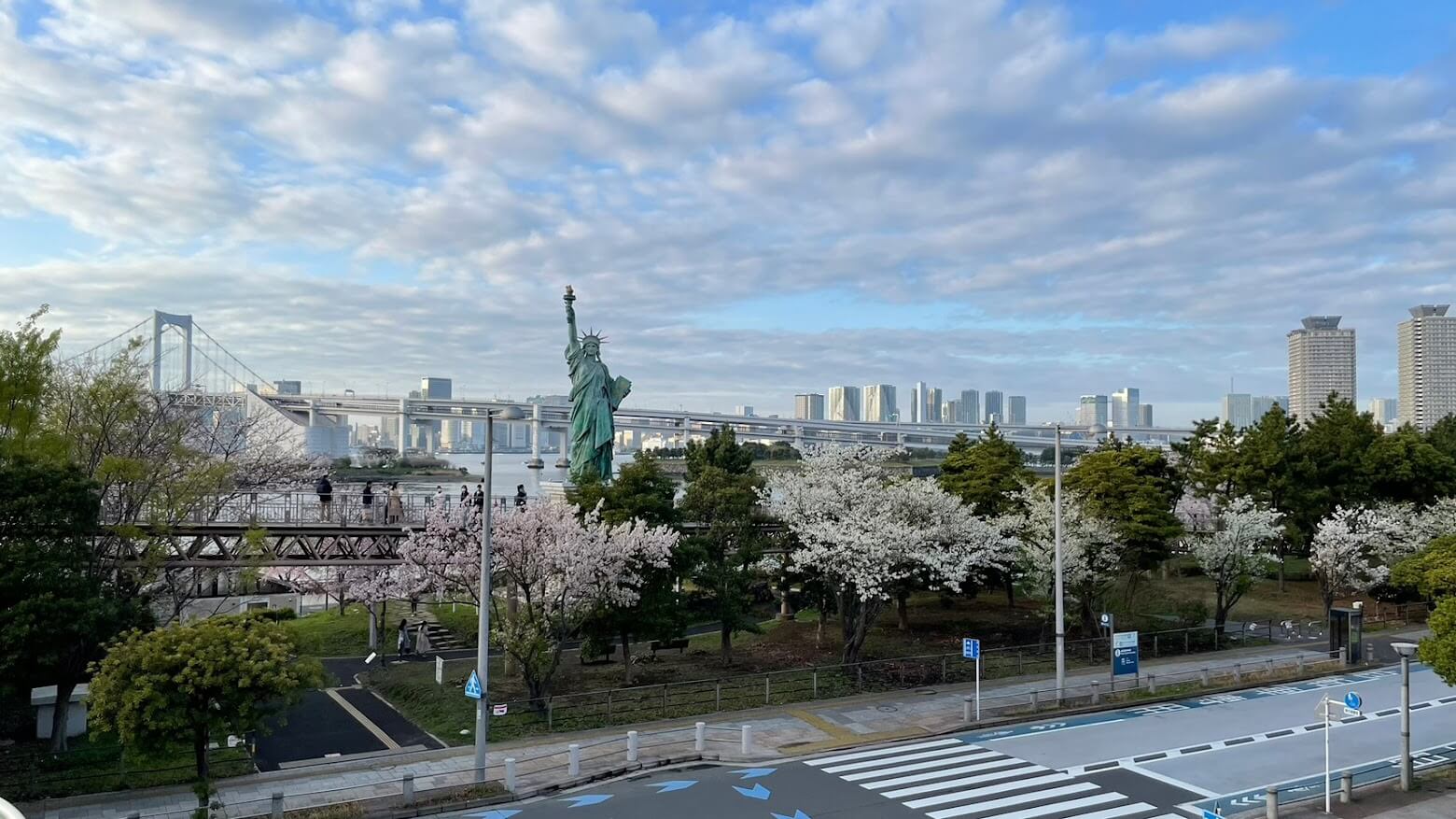
Odaiba (お台場/odaiba) is a vast artificial island located in Tokyo Bay, created through land reclamation. It boasts numerous popular tourist attractions and shopping centers, drawing a large number of visitors annually. Notable landmarks include Odaiba Seaside Park, Fuji Television Building, Tokyo JOYPOLIS, AQUA CITY, and DiverCity.
Tokyo Odaiba seamlessly integrates modern architecture, shopping malls, theme parks, entertainment facilities, and picturesque bay views, providing visitors with a diverse and enriching travel experience. If you are planning a visit to Tokyo, consider dedicating a day to explore Odaiba. Additionally, the nearby TeamLab Planets TOKYO in Toyosu is worth a visit; you can conveniently reach it by taking the Yurikamome Line and alighting at Shintoyosu Station (U15).
Address: Daiba, Minato, Tokyo 135-0091, Japan
Key Attractions:
Odaiba Seaside Park
Fuji Television Building
DiverCity
Tokyo JOYPOLIS
AQUA CITY
Business Hours: Open-air areas are accessible at all times.
Tokyo JOYPOLIS: 10:00 AM to 7:00 PM
DiverCity Tokyo Plaza: 11:00 AM to 8:00 PM
AQUA CITY: 11:00 AM to 8:00 PM
Admission: Free entry
Note: Tokyo JOYPOLIS requires a separate admission ticket.
Meiji Shrine
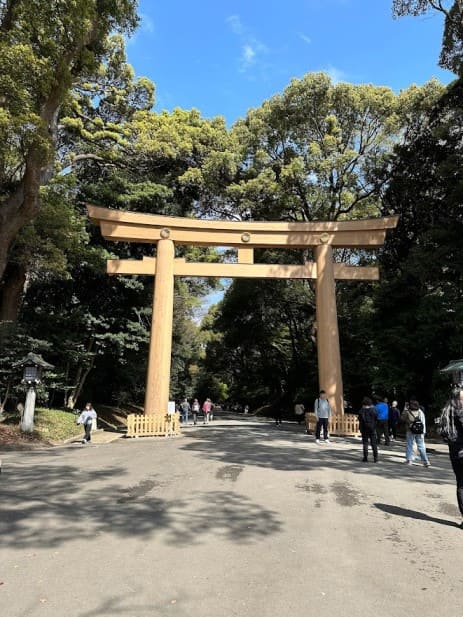
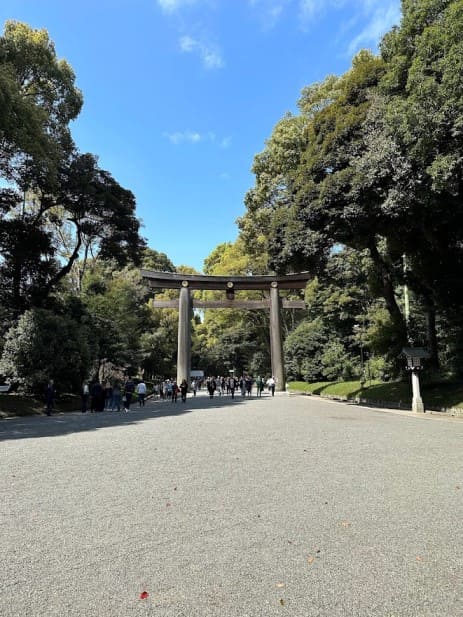
Meiji Shrine is one of the most famous shrines in Tokyo, located in the Shibuya ward of Tokyo, Japan. Constructed in 1920, Meiji Shrine was built to commemorate Emperor Meiji and Empress Shoken. The Meiji era marked a transformative period in Japan’s modernization, and this shrine symbolizes the country’s journey toward modernity and national development.
Occupying a vast area, Meiji Shrine includes prominent structures such as the main hall, prayer hall, grand torii gate, and palace. Surrounding the shrine, there are dense forests and serene pathways, covering a total area of 70 hectares. Whether you are interested in religious culture or seeking a tranquil escape, Meiji Shrine is a worthwhile visit. It serves not only as a religious site but also as a symbol of Japan’s history and culture.
Address: 1-1 Yoyogikamizonocho, Shibuya City, Tokyo 151-8557, Japan
Business Hours: 05:20 ~ 17:20 (varies by month)
Admission: Free entry
Religion: Shinto
Official Website: Click Here
Yoyogi Park
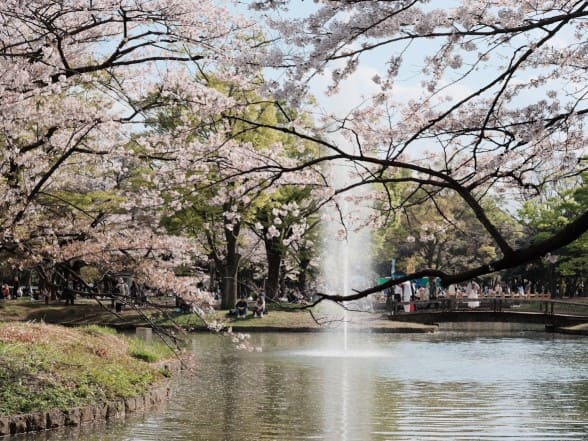
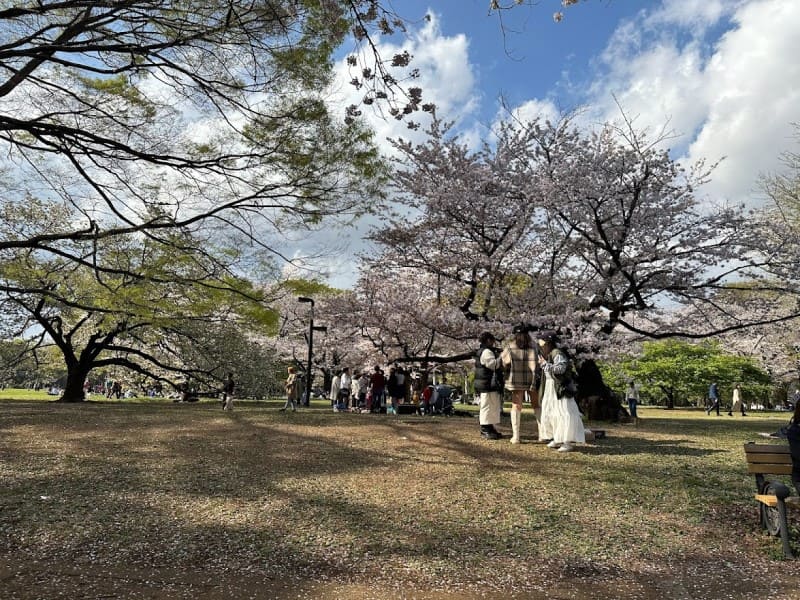
Yoyogi Park is one of the largest urban parks in Tokyo, located in Shibuya Ward, adjacent to the renowned Meiji Shrine. The park offers various amenities and services, including cafes, restaurants, and public restrooms, providing a relaxing environment to enjoy food and drinks or rent a bicycle for a leisurely ride around the park.
During the spring season, Yoyogi Park becomes a popular destination for cherry blossom viewing. Hundreds of cherry blossom trees bloom, attracting numerous visitors to engage in hanami (flower viewing) picnics beneath the blossoms. As the park gets crowded during peak cherry blossom season, finding a good picnic spot may require some patience. Picnic mats and food are available for purchase within the park, allowing for impromptu picnic plans.
Address: 2-1 Yoyogikamizonocho, Shibuya City, Tokyo 151-0052, Japan
Business Hours: Open 24/7
Admission: Free entry
Official Website: Click Here
Shinjuku Gyoen
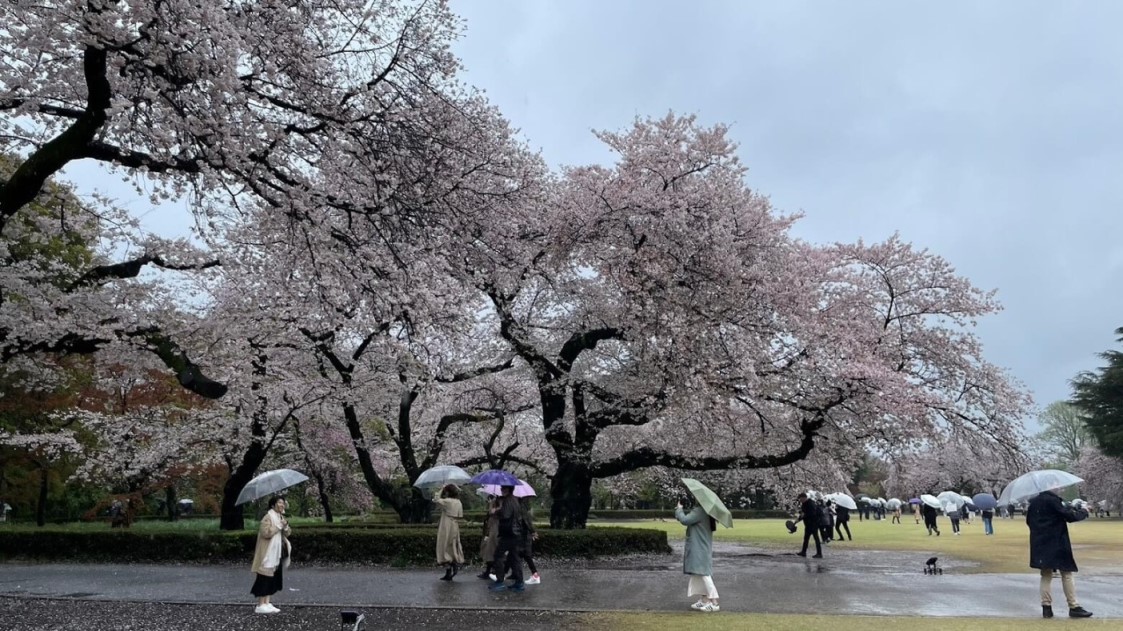
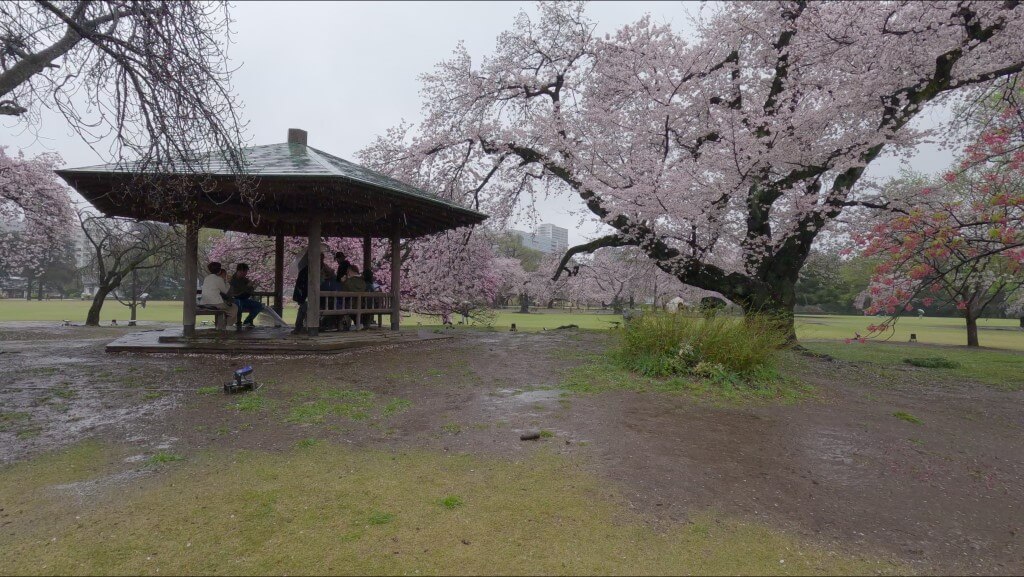
Shinjuku Gyoen is located in the heart of Shinjuku, Tokyo, and is akin to a secret garden. It features a graceful Japanese-style garden and a Western-style garden, blending traditional and modern aesthetics. Whether it’s the cherry blossoms in full bloom in spring, the emerald green lakes in summer, the autumnal maple leaves, or the clear winter lake, each season has its own unique charm.
During the cherry blossom season from late March to early April, to avoid overcrowding, reservations must be made online in advance for this period, regardless of weekends or weekdays. Every year during cherry blossom season, Shinjuku Gyoen is filled with visitors and locals picnicking and enjoying the flowers. Unfortunately, on the day I visited, it was raining, and the experience of picnicking under the cherry blossoms was not possible.
Address: 11 Naitomachi, Shinjuku City, Tokyo 160-0014, Japan
Business Hours: 09:00 ~ 19:00 (Business hours vary by season)
Admission: Free entry
Adults: 500 Japanese Yen
Students: 250 Japanese Yen
Seniors (65 years and above): 250 Japanese Yen
Middle school students (under 15 years): Free
Official Website: Click Here
Yasukuni Shrine
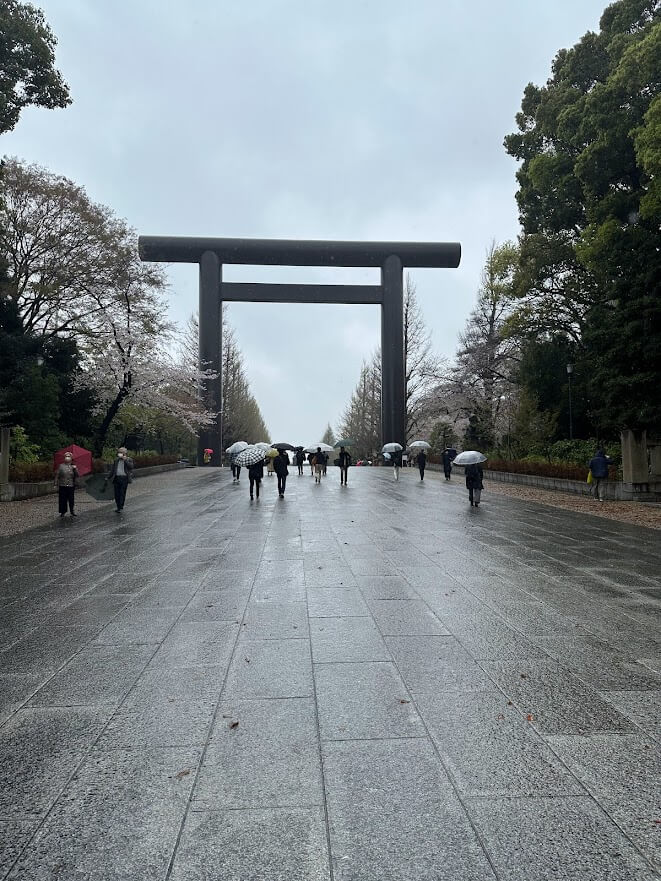
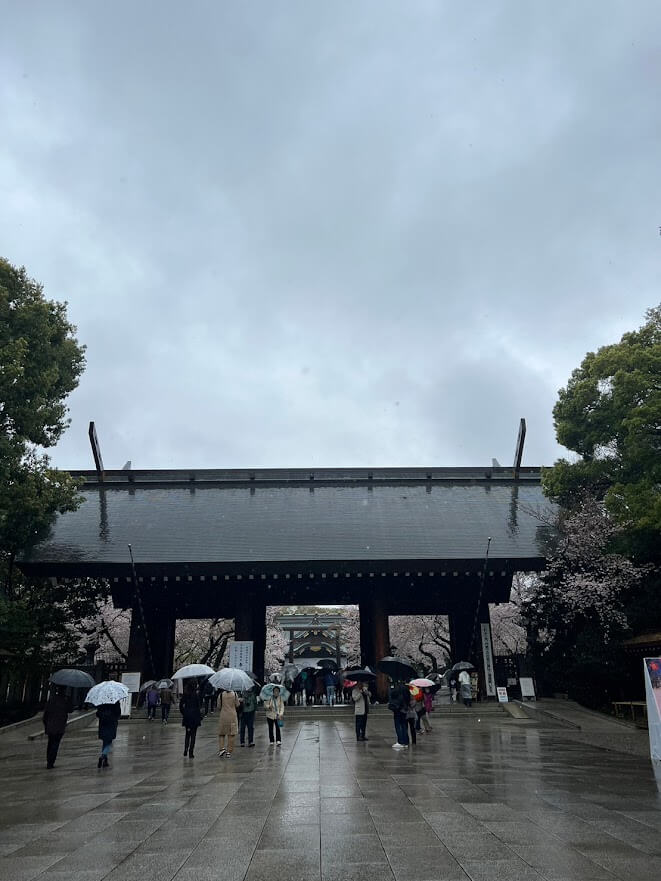
Yasukuni Shrine (せいこくじんじゃ) is a Shinto shrine located in Chiyoda, Tokyo, Japan. Established in 1869, its primary purpose is to enshrine and honor the spirits of military personnel and civilians who dedicated themselves to the service of the Japanese nation. Originally named “Tokyo Shokonsha,” it was later renamed “Yasukuni Shrine” in 1879.
During the cherry blossom season each year, Yasukuni Shrine is a popular destination for cherry blossom viewing. It is recommended to visit the nearby renowned Chidorigafuchi, known for its scenic water-lined cherry blossoms. In autumn, Yasukuni Shrine’s ginkgo and maple leaves also make it a popular spot for enjoying fall foliage.
Address: 3 Chome-1-1 Kudankita, Chiyoda City, Tokyo 102-0073, Japan
Business Hours: 06:00 ~ 18:00
Admission: Free entry
Religion: Shinto
Tokyo Daijingu
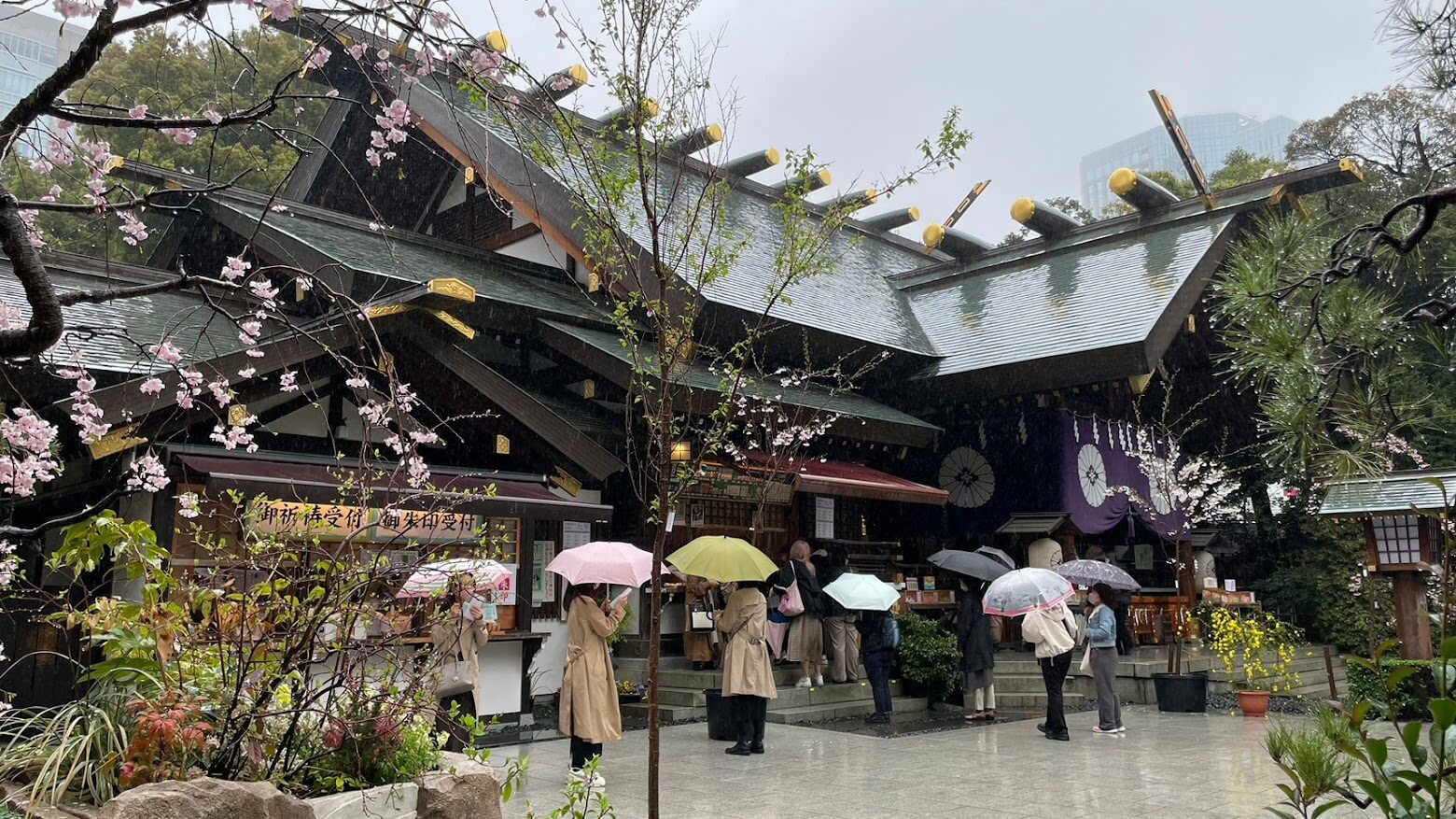
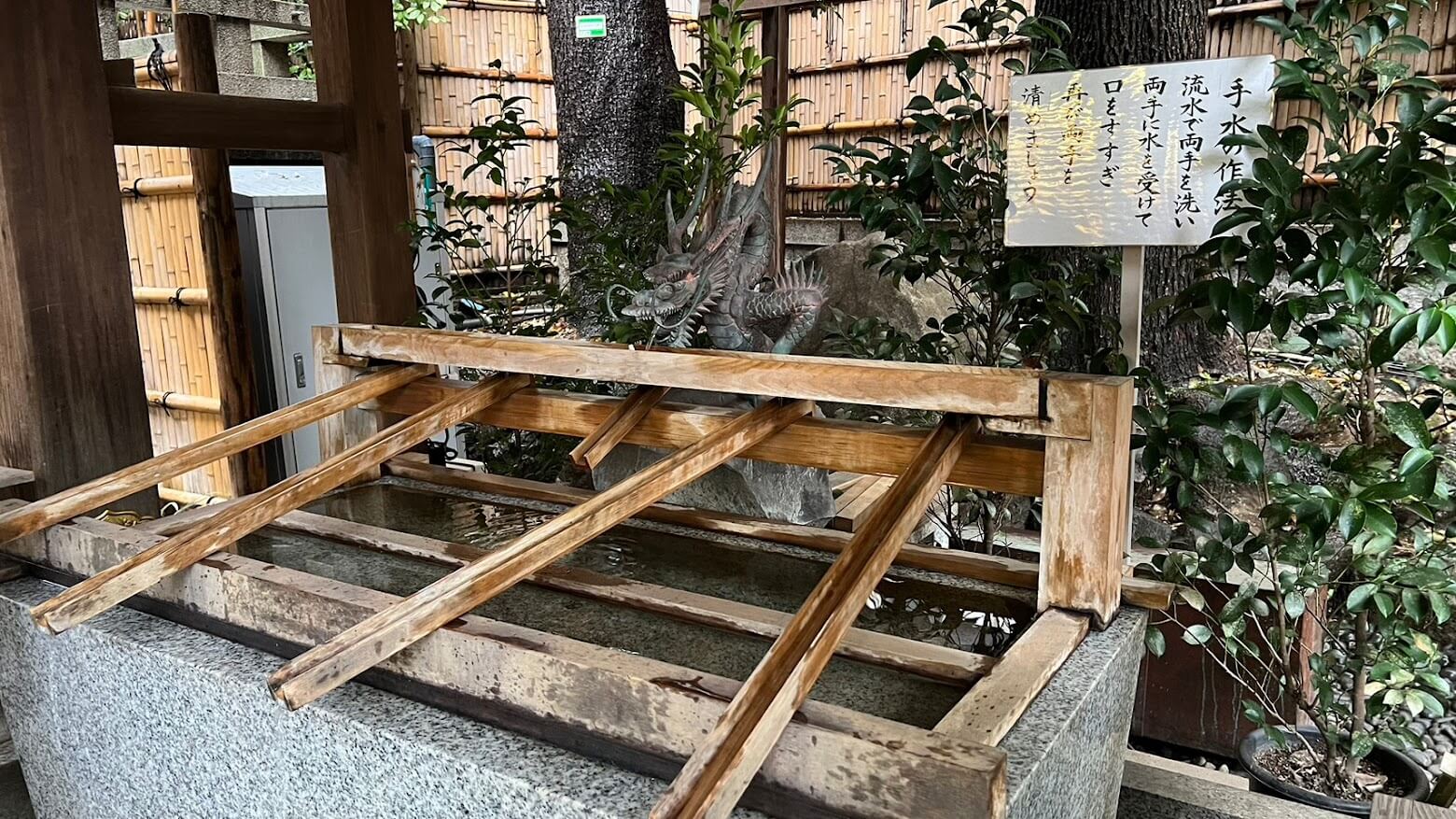
Tokyo Daijingu (とうきょうだいじんぐう) is a Shinto shrine located in Chiyoda City, Tokyo, Japan. It is one of the “Tokyo Five Shrines” and is renowned for its association with matchmaking and prayers for romantic success. It takes about 5 minutes to walk from Iidabashi Station to Tokyo Daijingu, and while the shrine’s grounds may not be extensive, it attracts a considerable number of worshipers.
Address: 2 Chome-4-1 Fujimi, Chiyoda City, Tokyo 102-0071, Japan
Business Hours: 06:00 – 21:00
Admission: Free entry
Religion: Shinto
Ueno Park
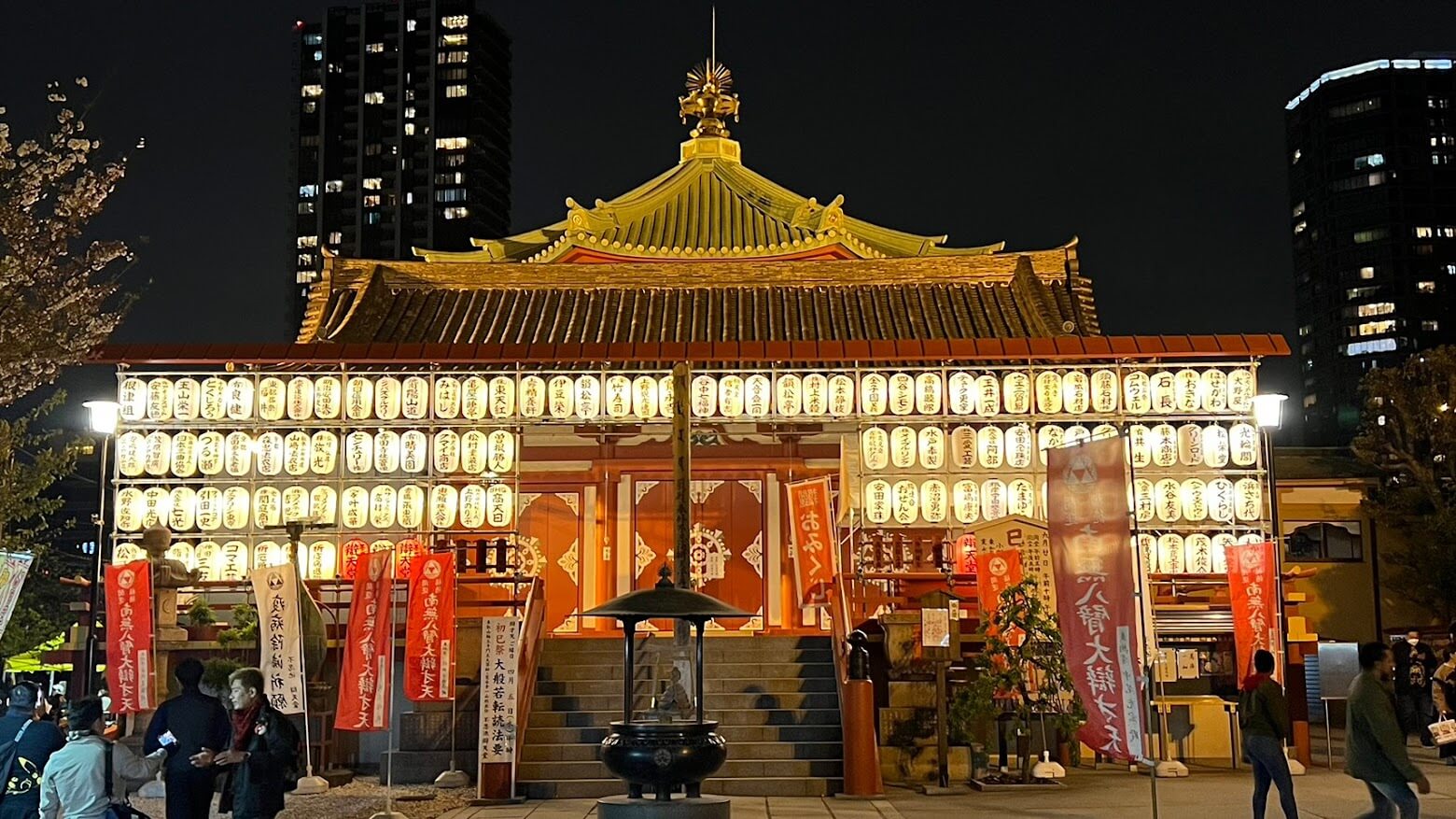
Ueno Park is one of the most renowned and largest urban parks in Tokyo, situated in the Ueno district. The park boasts extensive green spaces, lakes, gardens, and walking paths. One of its most iconic features is the enchanting cherry blossom pathway, which becomes a popular destination for cherry blossom viewing every spring.
Address: Uenokoen, Taito City, Tokyo 110-0007日本, Japan
Business Hours: 05:00 – 23:00
Admission: Free entry
ghibli museum, mitaka
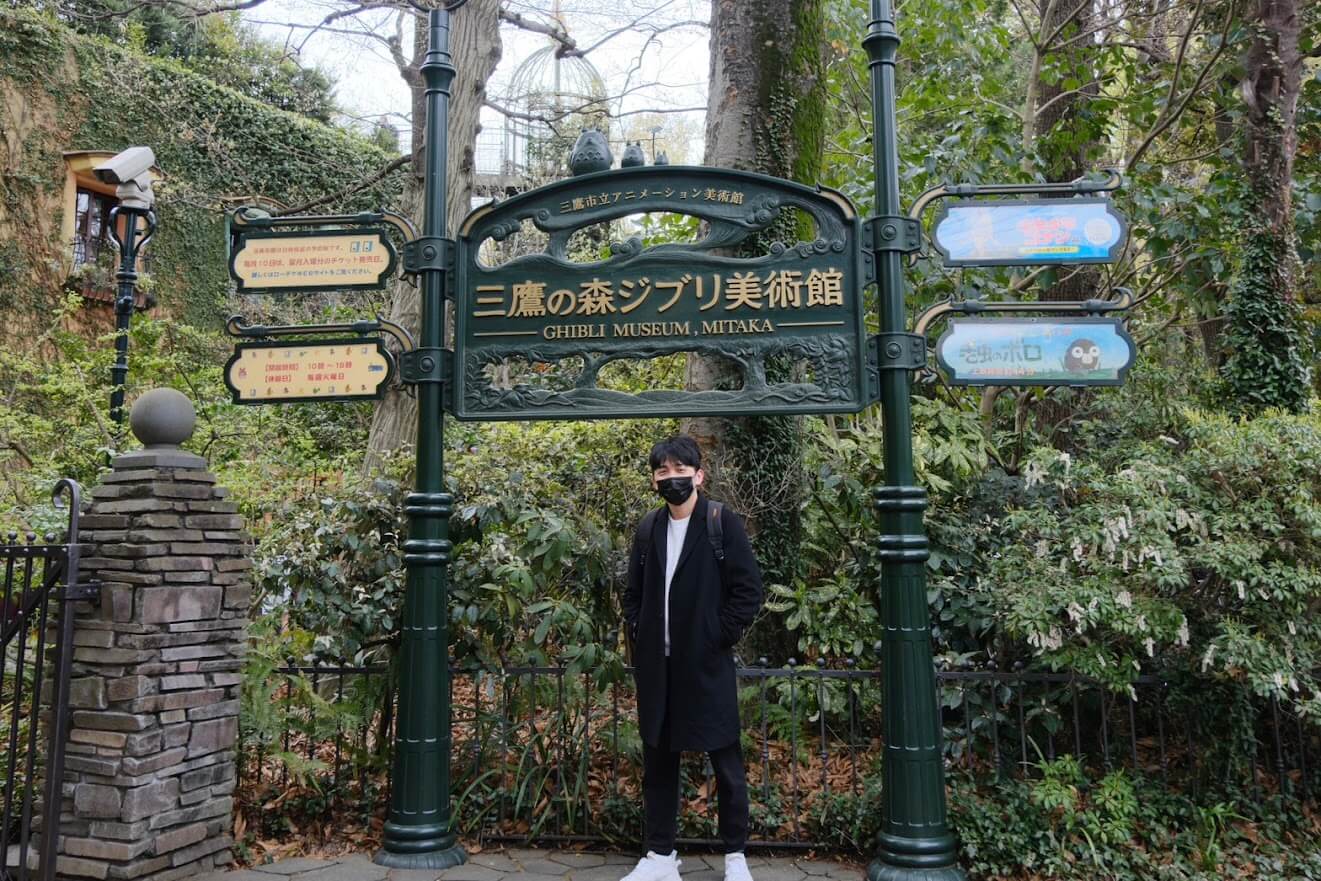
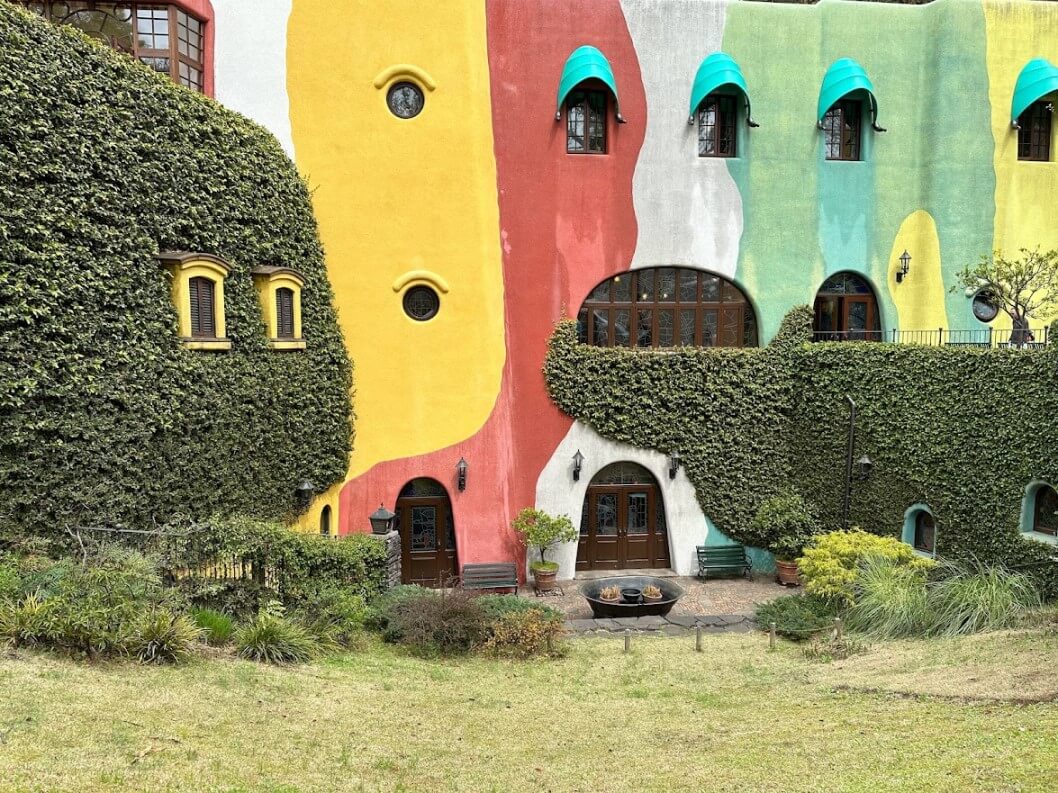
The Ghibli Museum, Mitaka (Mitaka no Mori Ghibli Bijutsukan) is a museum located in Mitaka, Tokyo, Japan. It was established to commemorate the renowned animation director Hayao Miyazaki and his Studio Ghibli. The museum showcases numerous classic animated works by Miyazaki and his studio, including “My Neighbor Totoro,” “Castle in the Sky,” “Spirited Away,” and more.
Tickets for the museum are designated for specific time slots, and daily visitor numbers are limited. Passport verification is required for entry. Tickets, especially during the pre-sale period, tend to sell out quickly, highlighting the popularity of the Ghibli Museum.
Address:1 Chome-1-83 Shimorenjaku, Mitaka, Tokyo 181-0013, Japan
Business Hours: 10:00 AM – 6:00 PM
Admission:
19 years and older: 1,000 Japanese Yen
13 – 18 years: 700 Japanese Yen
7 – 12 years: 400 Japanese Yen
4 – 6 years: 100 Japanese Yen
3 years and below: Free
Official Website: Click Here
Inokashira Onshi Park
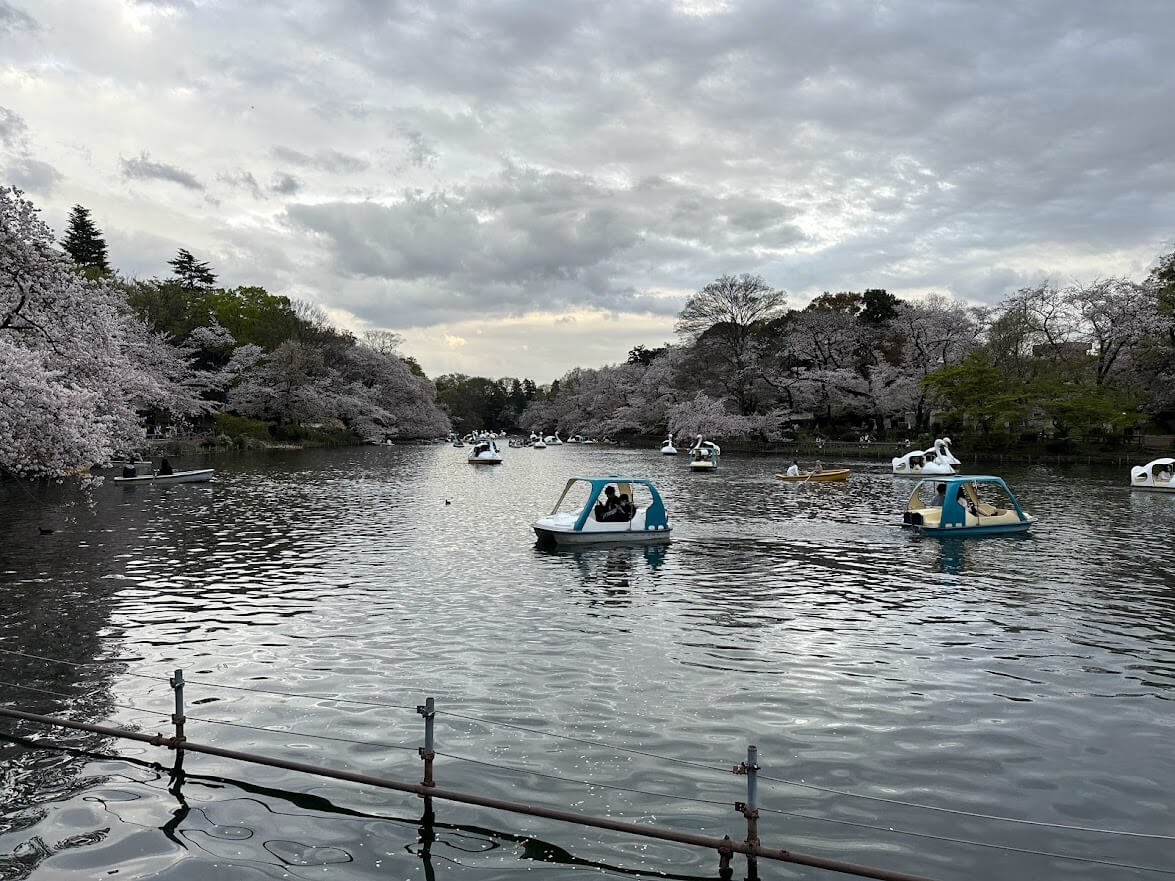
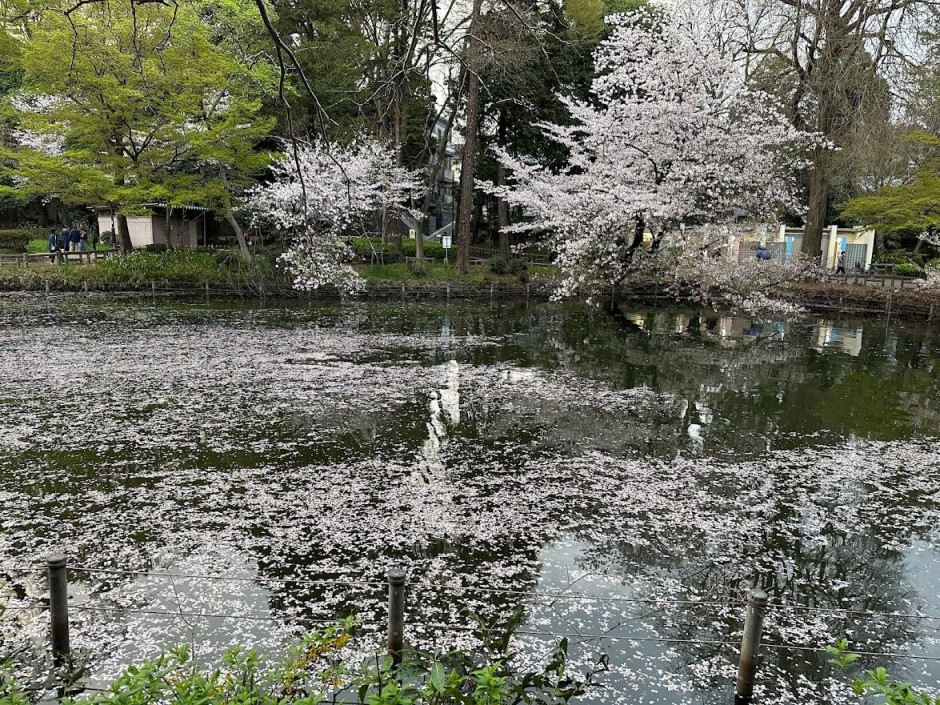
Inokashira Onshi Park (いのくずおんしこうえん) is a beautiful park located at the border of Mitaka and Musashino cities in Tokyo, Japan. It is one of the earliest designated parks in Tokyo and is renowned as a favorite leisure destination for residents and visitors alike.
During cherry blossom season, Inokashira Onshi Park is recognized as one of Japan’s famous cherry blossom viewing spots. The park’s proximity to the Ghibli Museum in Mitaka and the charm of Kichijoji make it an ideal itinerary to combine shopping, exploring the Ghibli Museum, and enjoying the park’s scenery.
Address:1 Chome-18-31 Gotenyama, Musashino, Tokyo 180-0005, Japan
Business Hours: Open all day
Admission: Free
Official Website: Click Here
Tsukiji Market
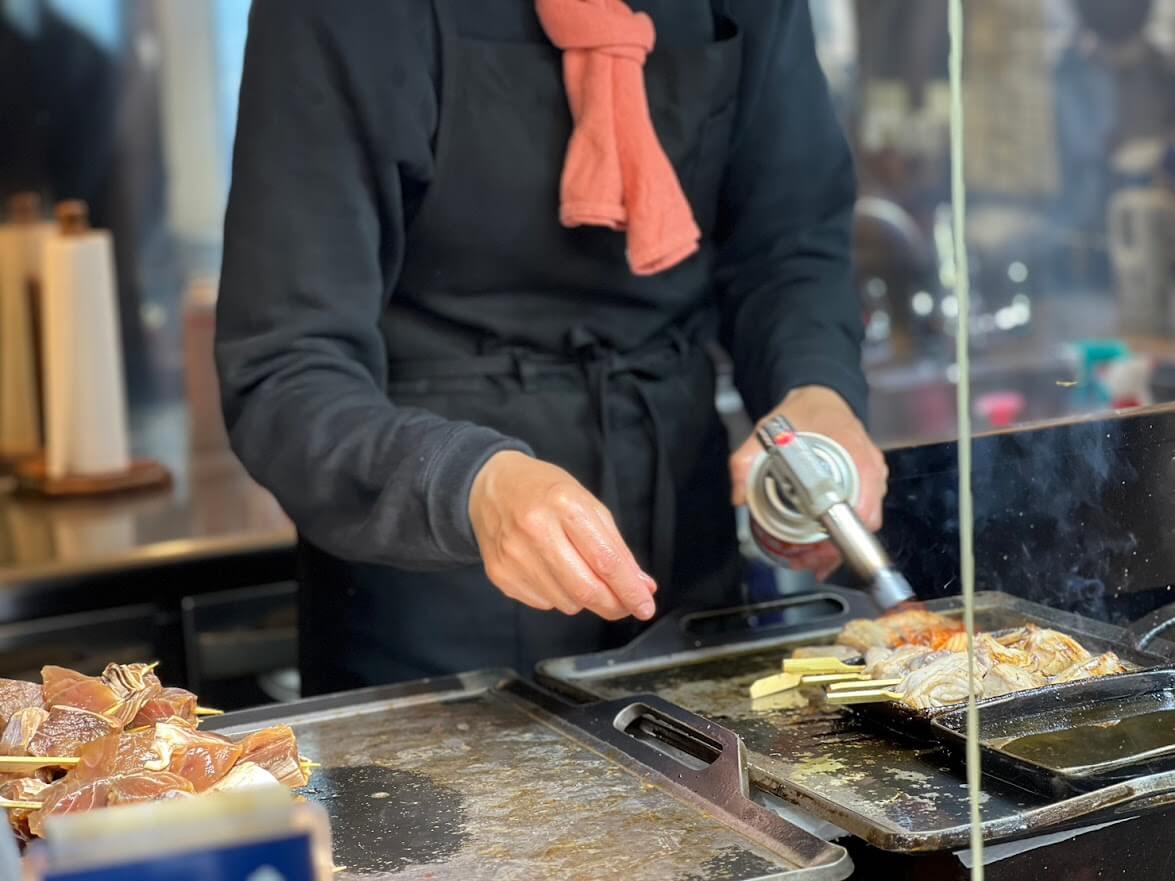
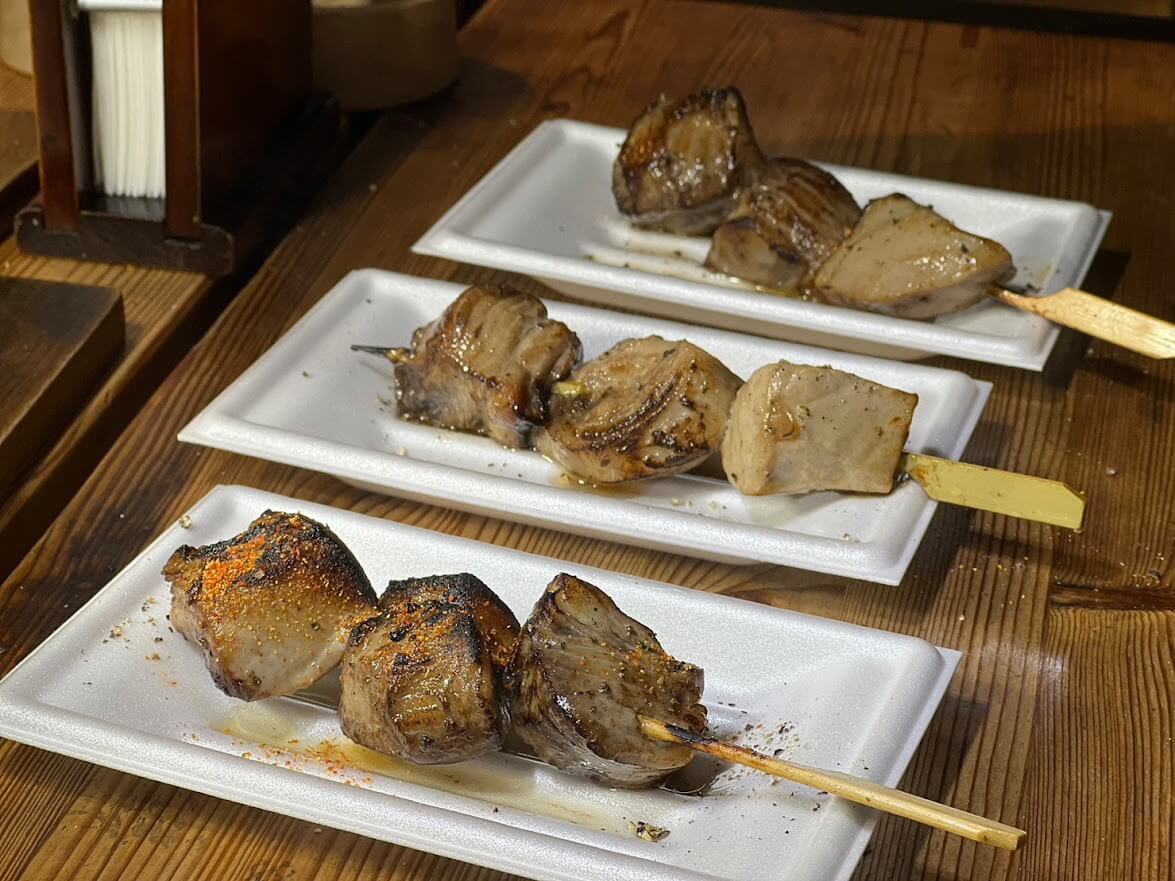
Tsukiji Market is a renowned seafood market in Tokyo, Japan, and is also one of the largest fish markets in the world. Located in the Tsukiji area along Tokyo Bay, it serves as the hub of Japan’s seafood industry, attracting numerous seafood wholesalers and visitors. The market offers a wide variety of delectable food options, making it a must-visit for food enthusiasts.
Address:1 4 Chome-16-2 Tsukiji, Chuo City, Tokyo 104-0045, Japan
Business Hours: Depends on individual shops
Recommended attractions in Tokyo suburbs
Tokyo Disney Resort
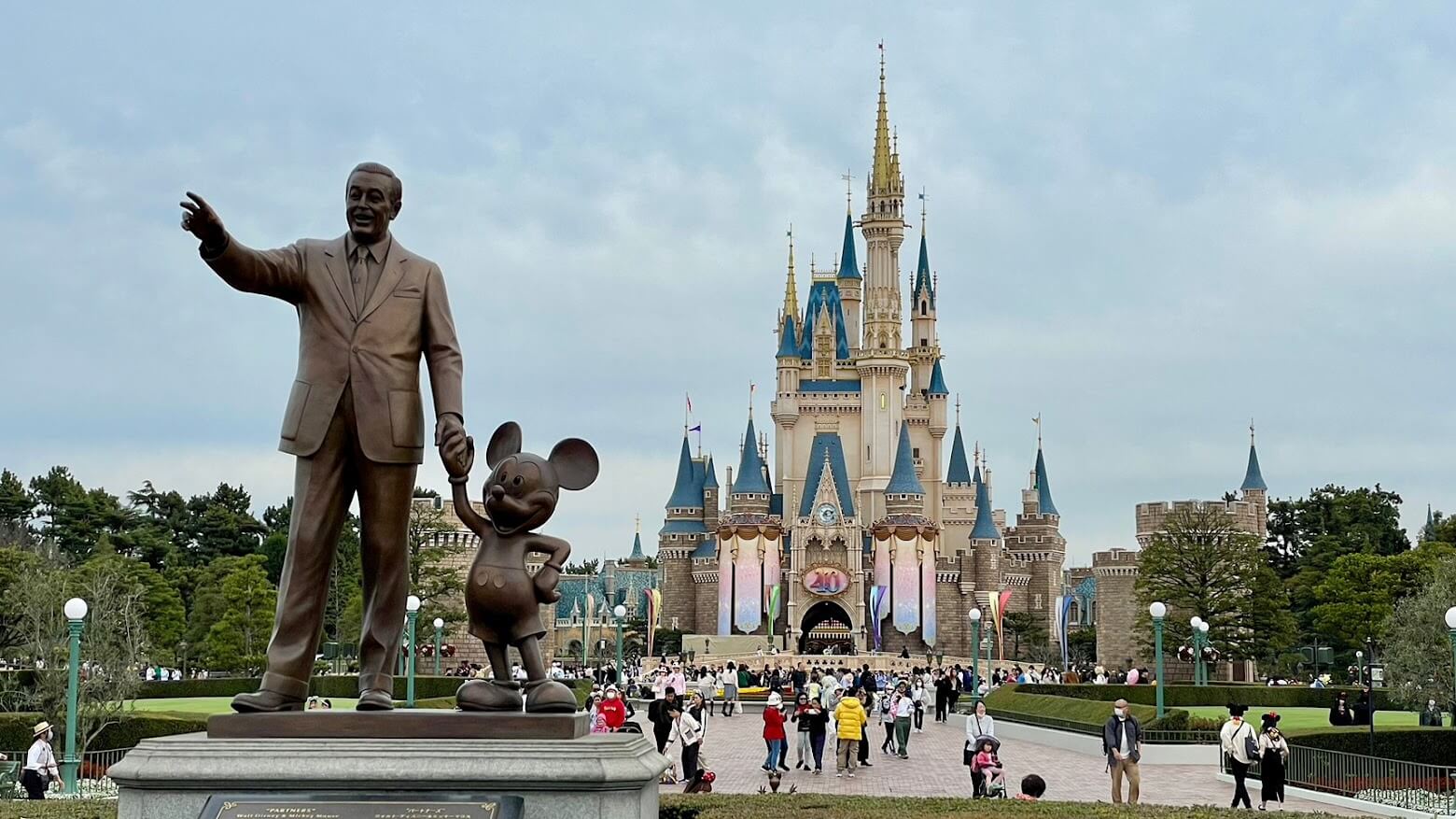
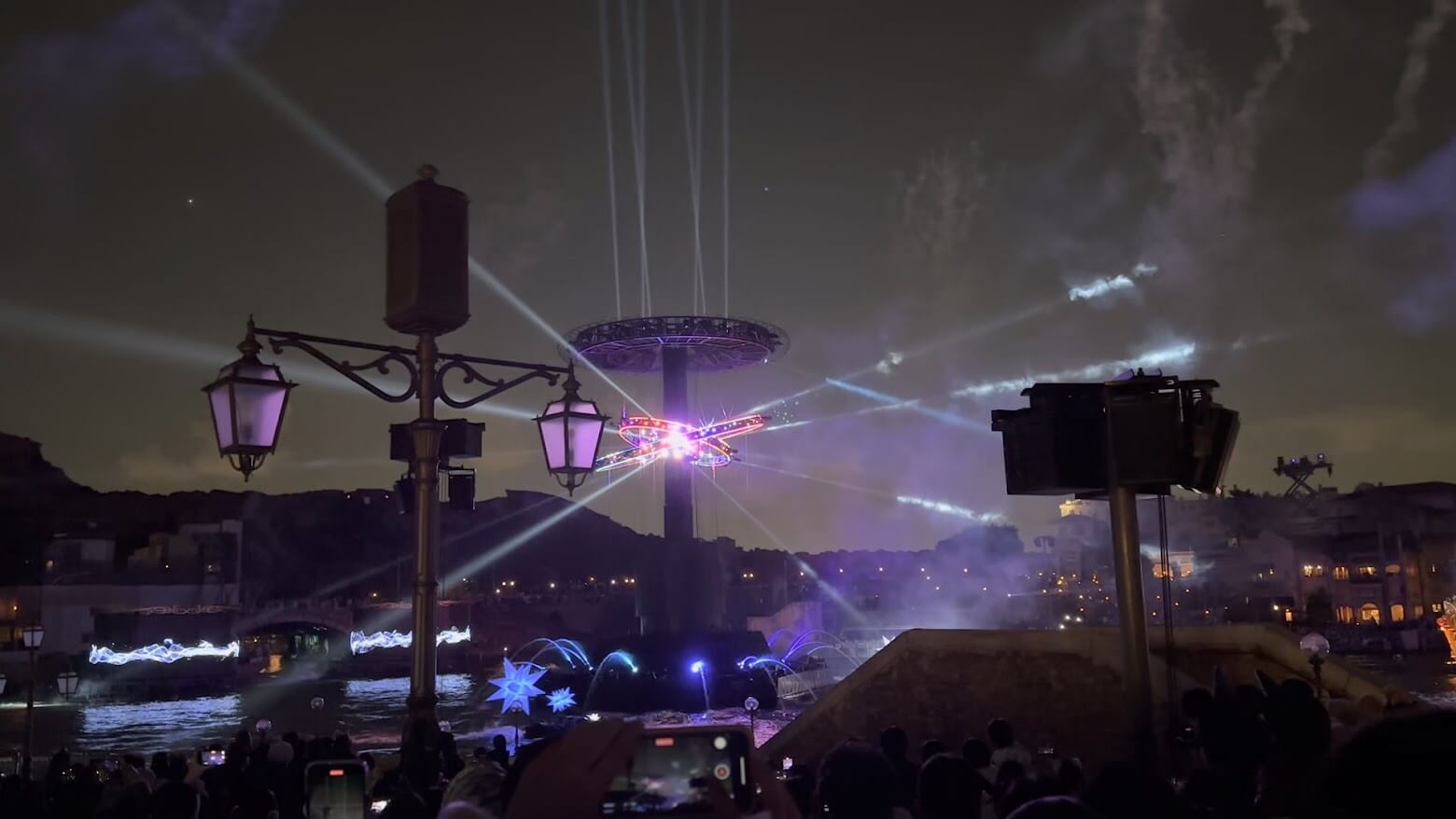
When it comes to Tokyo, one must-visit destination is the Tokyo Disney Resort. Despite its name, the resort is not located within Tokyo but in the Urayasu area of Chiba Prefecture. The Tokyo Disney Resort consists of two major theme parks: Tokyo Disneyland and Tokyo DisneySea. Spanning 201 hectares, the resort offers enough attractions and entertainment to fill several days.
Tokyo Disneyland primarily features family-friendly attractions, with fewer intense rides compared to Tokyo DisneySea. Key attractions at Tokyo Disneyland include the “Big Three Mountains”: Space Mountain (Tomorrowland), Splash Mountain (Critter Country), and Big Thunder Mountain (Westernland). The recently completed Beauty and the Beast-themed area is also highly recommended. Both theme parks host grand parades during midday and evening, showcasing impressive performances that are worth watching!
Address: 1-1 Maihama, Urayasu, Chiba 279-0031, Japan
Business Hours: 08:00 ~ 22:00 (Open year-round)
Ticket Prices (One-day Pass):
General Admission: ¥7,900 ~ ¥10,900
Student Admission: ¥6,600 ~ ¥9,000
Seniors (65 years and above): 250 Japanese Yen
Child Admission: ¥4,700 ~ ¥5,600
Official Website: Click Here
Tsurugaoka Hachimangu
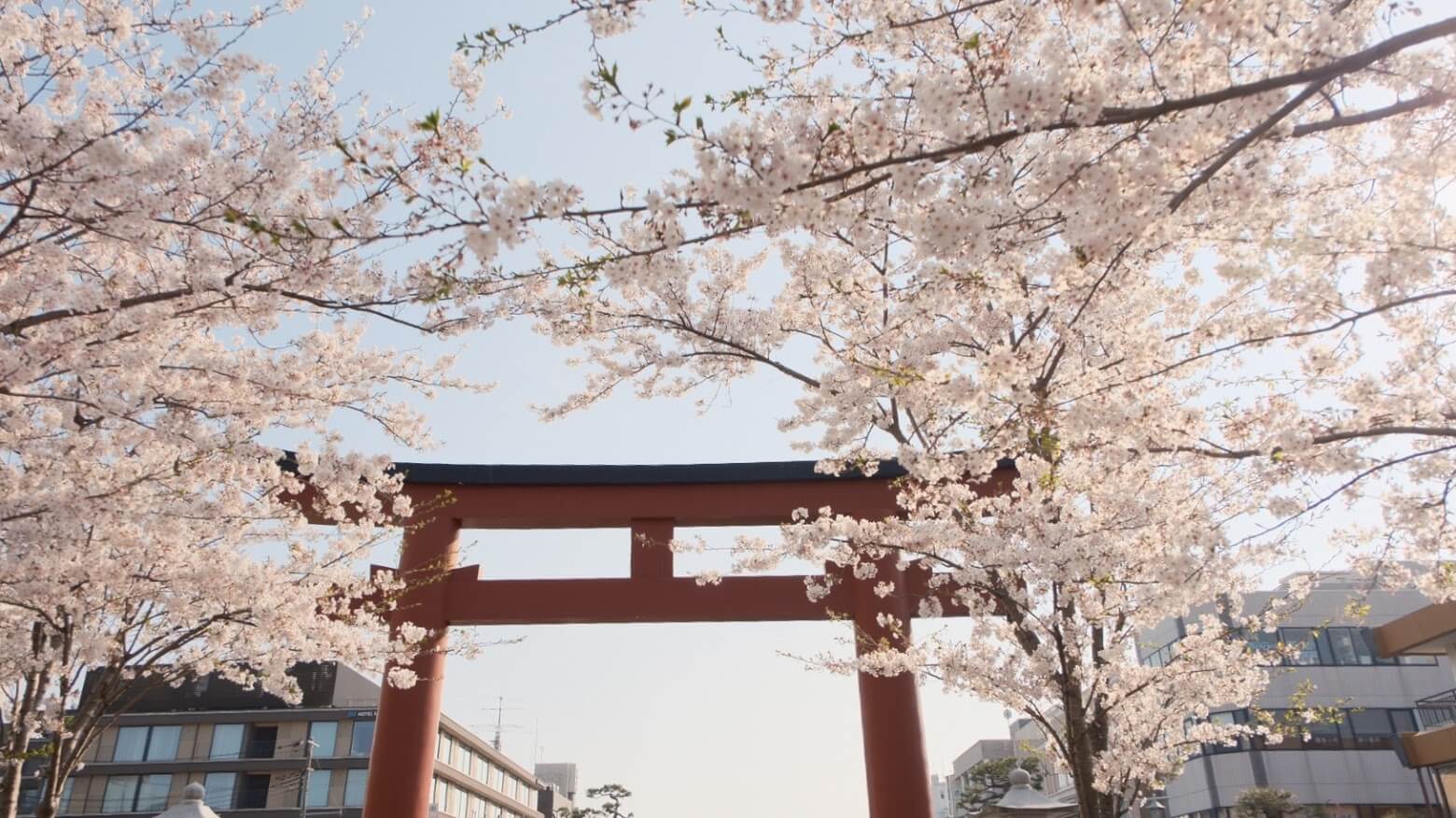
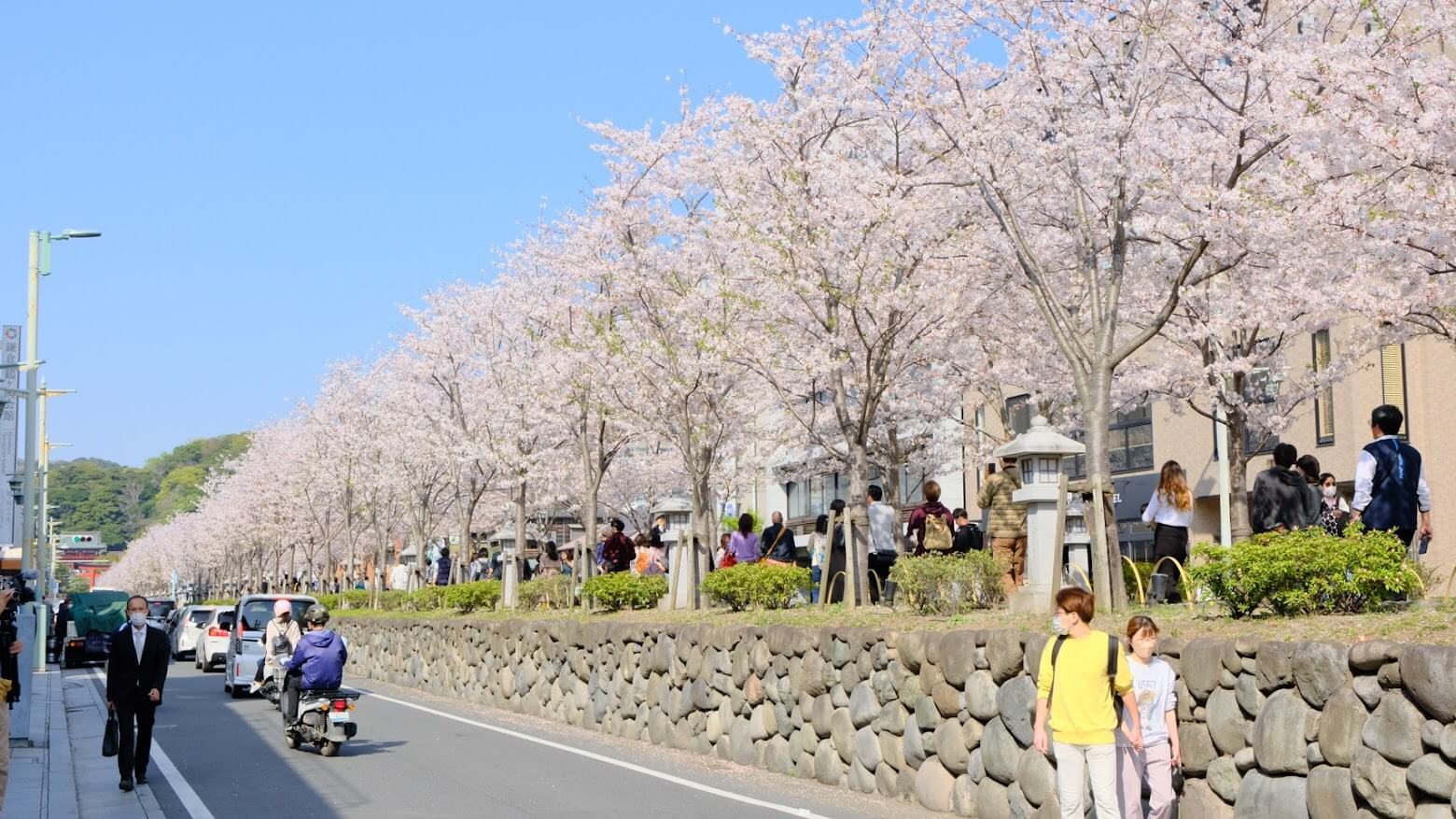
Tsurugaoka Hachimangu (つるがおかはちまんぐう) is an ancient and significant Shinto shrine located in Kamakura, Kanagawa Prefecture, Japan. Established in 1063 by Minamoto no Yoritomo, the founder of the Kamakura shogunate, the shrine was dedicated to the guardian deity “Hachiman Daibosatsu” for the protection of the shogunate and the warrior class.
Tsurugaoka Hachimangu is a must-visit attraction in Kamakura, situated at the end of Wakamiya-Oji. It attracts large crowds of visitors daily, and during cherry blossom season, the Tsurugaoka Hachimangu “Genpei Yume Monogatari” is one of the cherry blossom viewing spots. The approach from Kamakura Station to Tsurugaoka Hachimangu, passing through the Komachi-dori shopping street, is lined with over a hundred shops offering various goods and local delicacies!
Address: 2 Chome-1-31 Yukinoshita, Kamakura, Kanagawa 248-8588, Japan
Business Hours: 06:00 ~ 20:30 (Open Year-Round)
Admission: Free
Official Website: Click Here
Enoshima
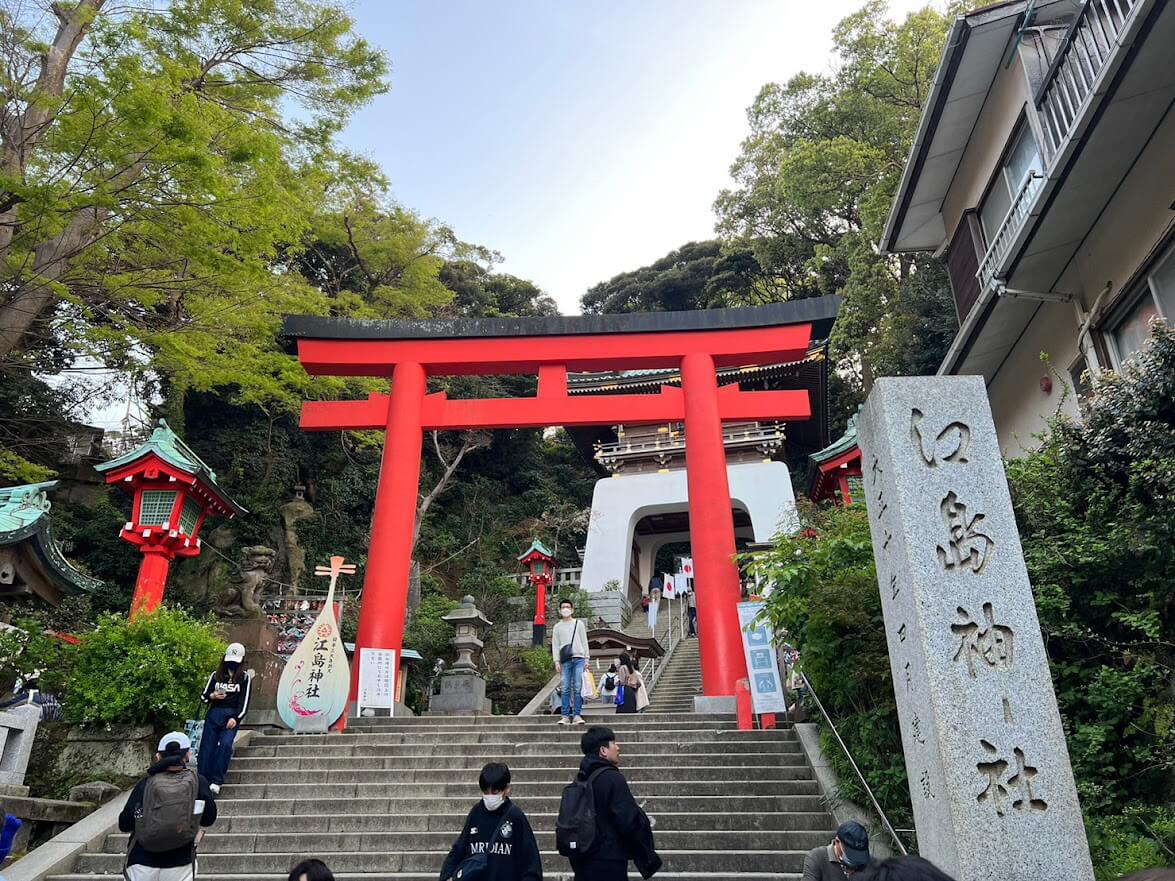
Enoshima (えのしま) is a small island located near Fujisawa City in Kanagawa Prefecture, Japan. Enoshima is renowned for its beautiful natural landscapes, temples, local snacks, and cultural activities. The most famous attraction on the island is the Enoshima Shrine. This shrine venerates three goddesses and is a significant place where local residents pray for safety and happiness.
Location: Fujisawa City, Kanagawa Prefecture, Japan
Business Hours: The outdoor areas of the island are open all day.
Enoshima Sea Candle Observation Lighthouse: 09:00 to 20:00
Enoshima Shrine: 08:00 to 17:00
Admission: Free(Some attractions may require admission fees)
Enoshima Sea Candle Observation Lighthouse (Adult): 500 yen
Enoshima Sea Candle Observation Lighthouse (Child): 250 yen
Enoshima Escar (Escalator): 360 yen
Official Website: Click Here
Karuizawa
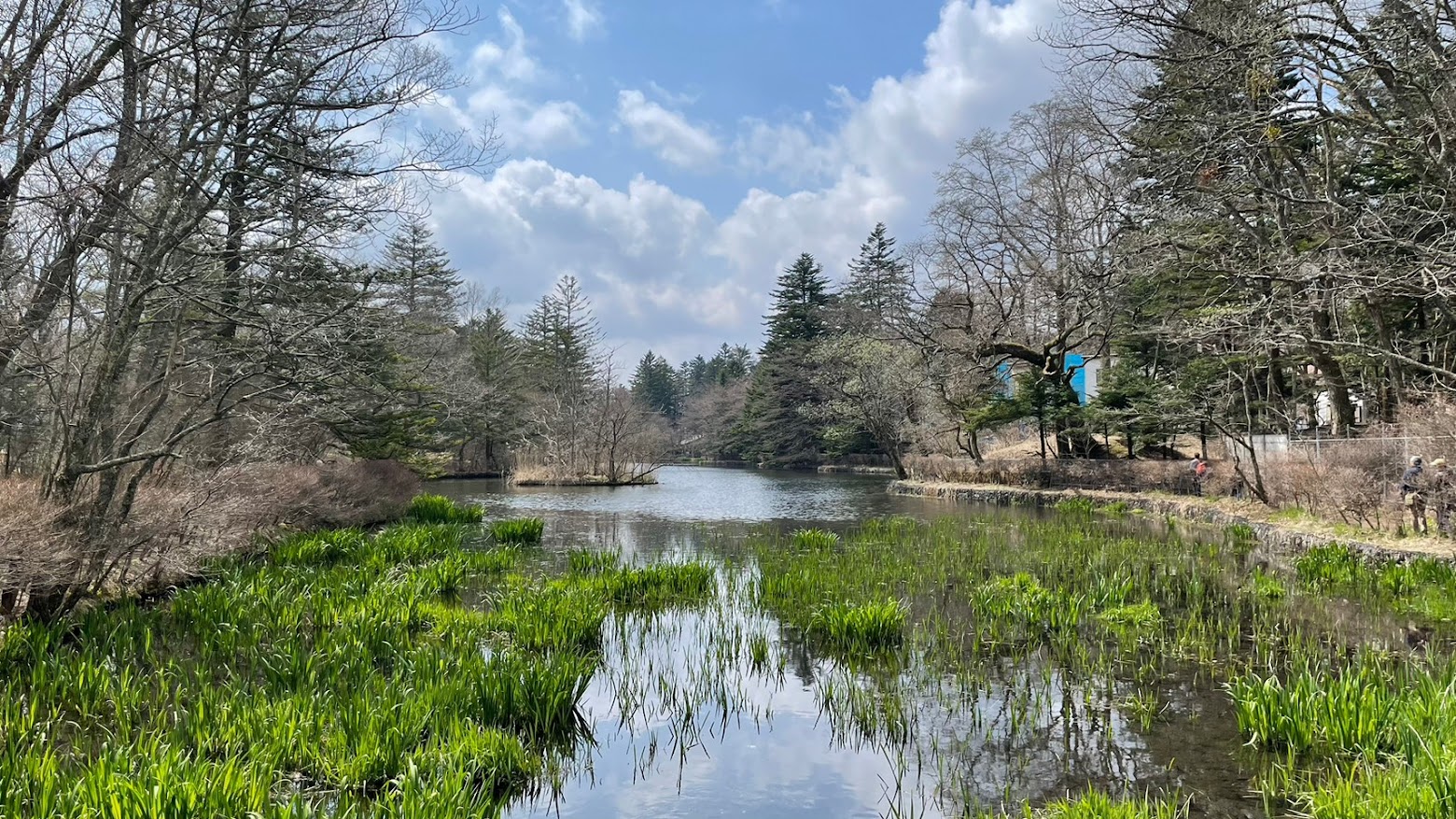
Karuizawa is a famous resort destination located in Nagano Prefecture, Japan, known for being a summer retreat and a popular winter destination with attractions like the Karuizawa Prince Ski Resort. Karuizawa is divided into two main areas: Old Karuizawa and Central Karuizawa. These two areas are a bit apart, so it is recommended to rent a bicycle for convenient transportation and enjoy the scenic beauty along the way. During winter, the ground can become frosty, so taking a bus to visit various attractions is advisable.
Location: Nagano Prefecture, Japan
Business Hours: Outdoor areas open all day
Stone Church: 10:00 AM – 5:00 PM
Kogen Church: 10:00 AM – 5:00 PM
Kumoba Pond: Open all day
Karuizawa St. Paul’s Catholic Church: 9:00 AM – 4:00 PM
KARUIZAWA PRINCE SHOPPING PLAZA: 10:00 AM – 7:00 PM
Elm Street Town: 10:00 AM – 7:00 PM
Admission: Free
Official Website: Click Here
